Barcelona is home to three Gaudí's houses, all of which are now museums open to the public.
We opted for Casa Batlló, but made it a point to walk by La Pedrera and Casa Vicens (which I shared here).
Again — you'll have to choose a specific time for booking tickets and I highly recommend doing this as we virtually skipped the line.
You're handed an audio guide and directed past the desk into the house.
Casa Batlló is the absolute personification of Art Nouveau: bannisters curve organically, fixtures resemble plants or shells, and the whole place seems to be alive.
While we didn't enjoy the audio guide — the audio on mine quickly garbled and skipped ahead, and the bits I could catch offered almost too many details that I couldn't enjoy the spaces for myself. Although, the audio is hosted through an iPhone that you can use to 'scan' the room and get a sense of what it looked like when it was used as a house and to get a sense of what Gaudí's inspirations may have been.
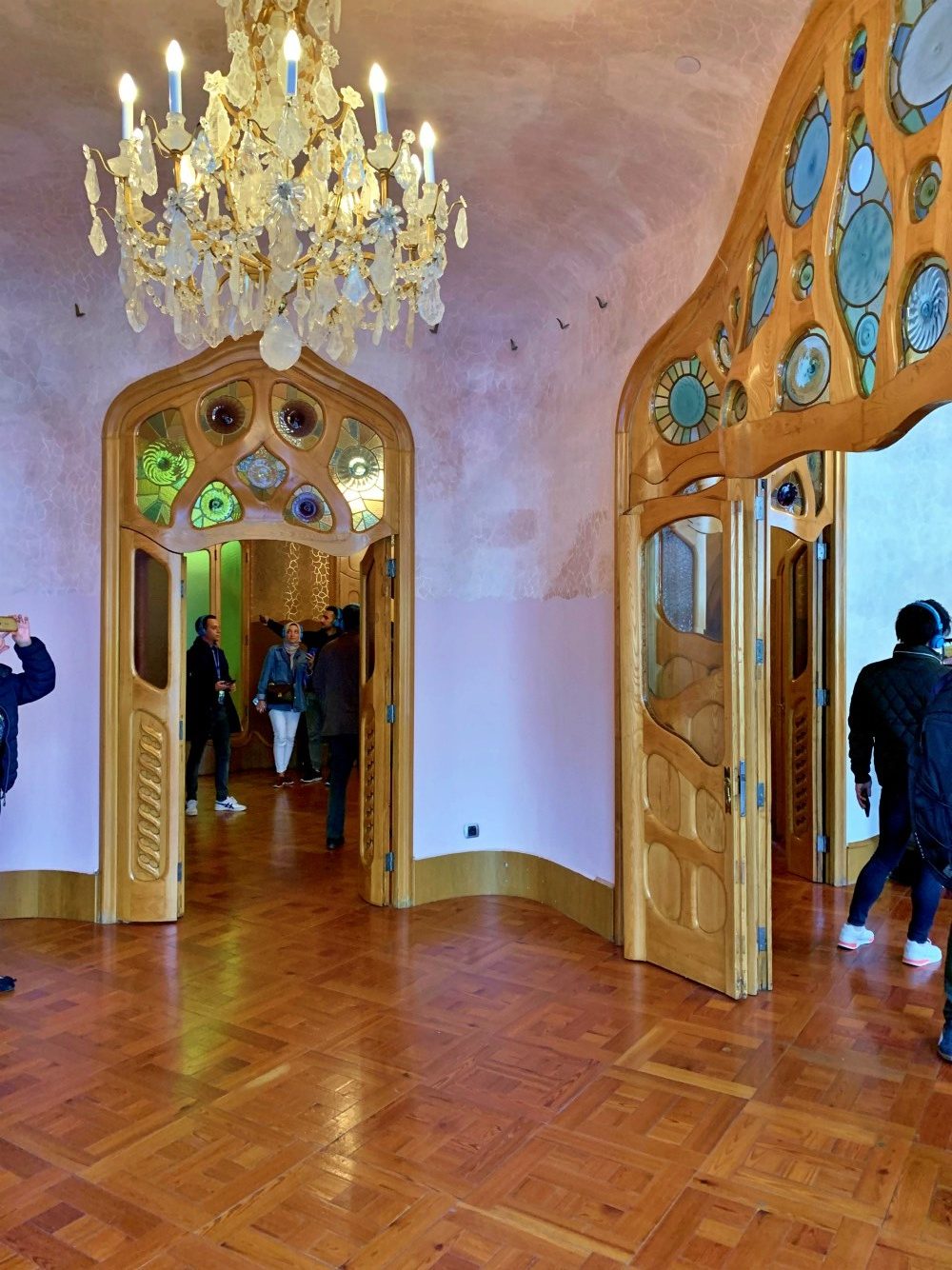 The main salon rooms where most of daily life happened, overlooking Passeig de Gracia
The main salon rooms where most of daily life happened, overlooking Passeig de Gracia
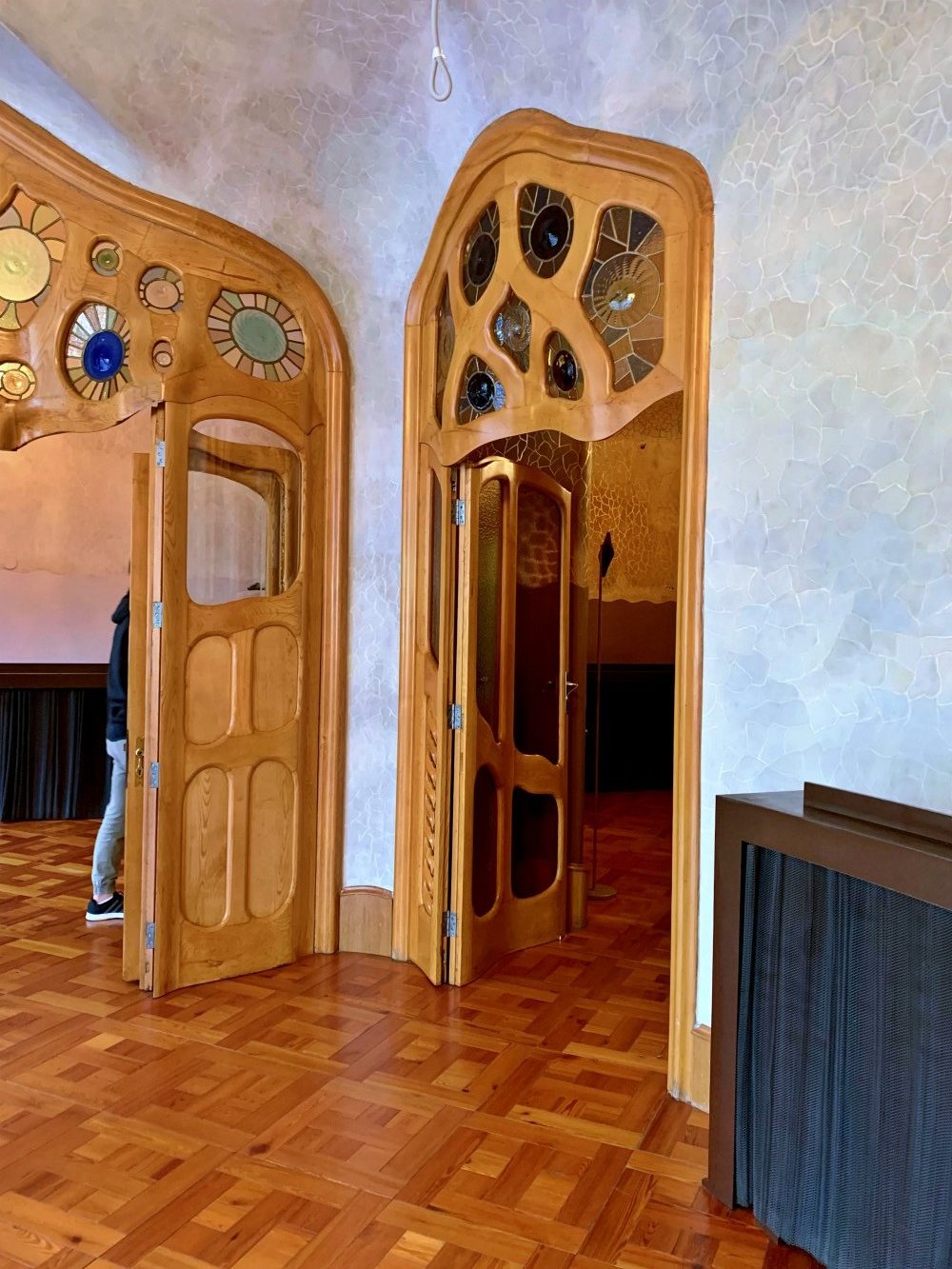 Organic stained glass shapes form in almost every doorway's transom window
Organic stained glass shapes form in almost every doorway's transom window
You wind your way through the house, which is split by a central staircase and elevator shaft flanked by a light well on either side that run the height of the house.
Understandably, the light wells bring light (and fresh air when they were open to the elements) down into every floor of the building, virtually erasing the need for lights in the rooms that have windows looking into the light wells.
Much of the house evokes the feeling of being underwater. The light wells start on the base floor in light blue tiles, increasing the lightness of the deepest part of the house, growing darker and more saturated as you climb each level to the roof. With the sun pouring into the light wells, you're reminded of swimming to the surface — the colors growing more vibrant as you get closer to the top.
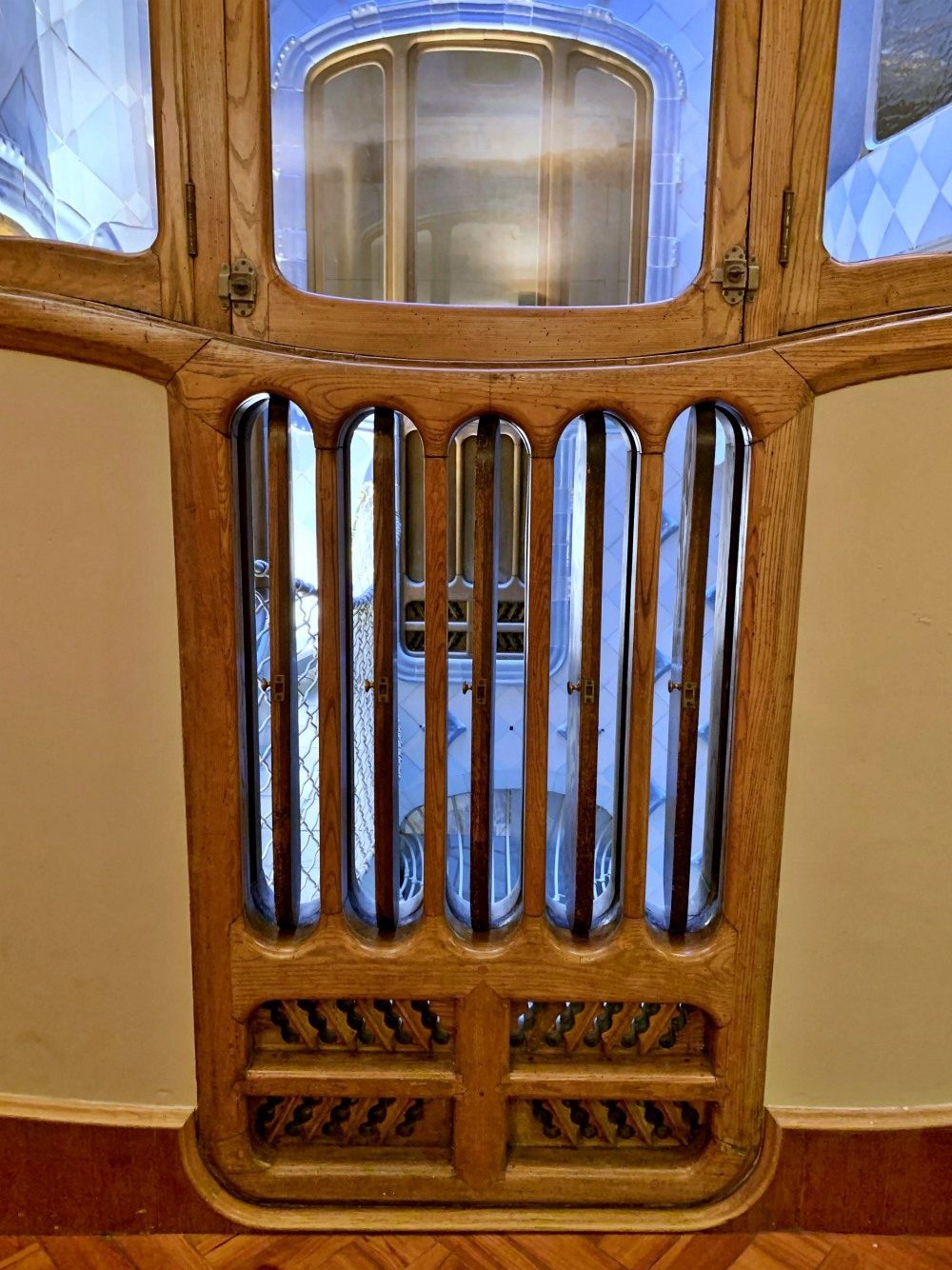 "Gill" ventilation windows that can be opened or closed to adjust the need for air in the rooms off of the light wells
"Gill" ventilation windows that can be opened or closed to adjust the need for air in the rooms off of the light wells
This place is quite the masterpiece, built for the Batlló family in the early 20th century. Gaudí not only transformed the original structure into what it is today but included fairly modern ideas, like the light wells which provide light and air movement throughout the whole house.
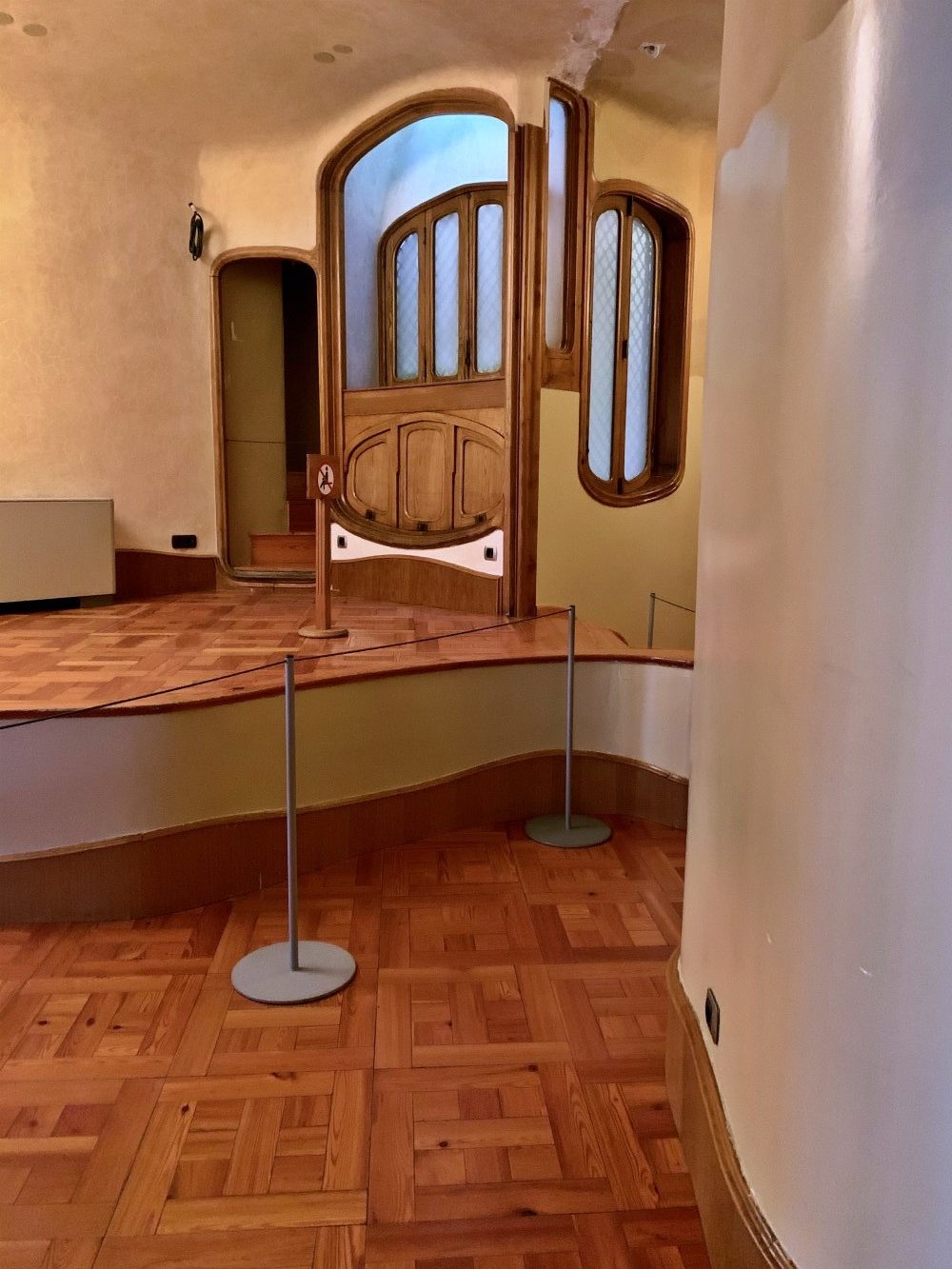 Simple things like doorways, windows, and handles are all given an organic flair as though they're moving with you
Simple things like doorways, windows, and handles are all given an organic flair as though they're moving with you
In the back of the house is a brightly mosaicked terrace, reminiscent of the structures in Parc Güell.
Casa Batlló is tucked next to other homes and cafes, making it really feel like a place that was once lived in.
On the top floor is the 'loft', a bright and airy vaulted set of rooms that were set aside for the Batlló family's hired help.
The roof is decorated with more sculptures, decorating the mundane. Here, a chimney is turned into something far more fantastical.
From the roof you can see as far as the National Museum in Parc Montjüic.
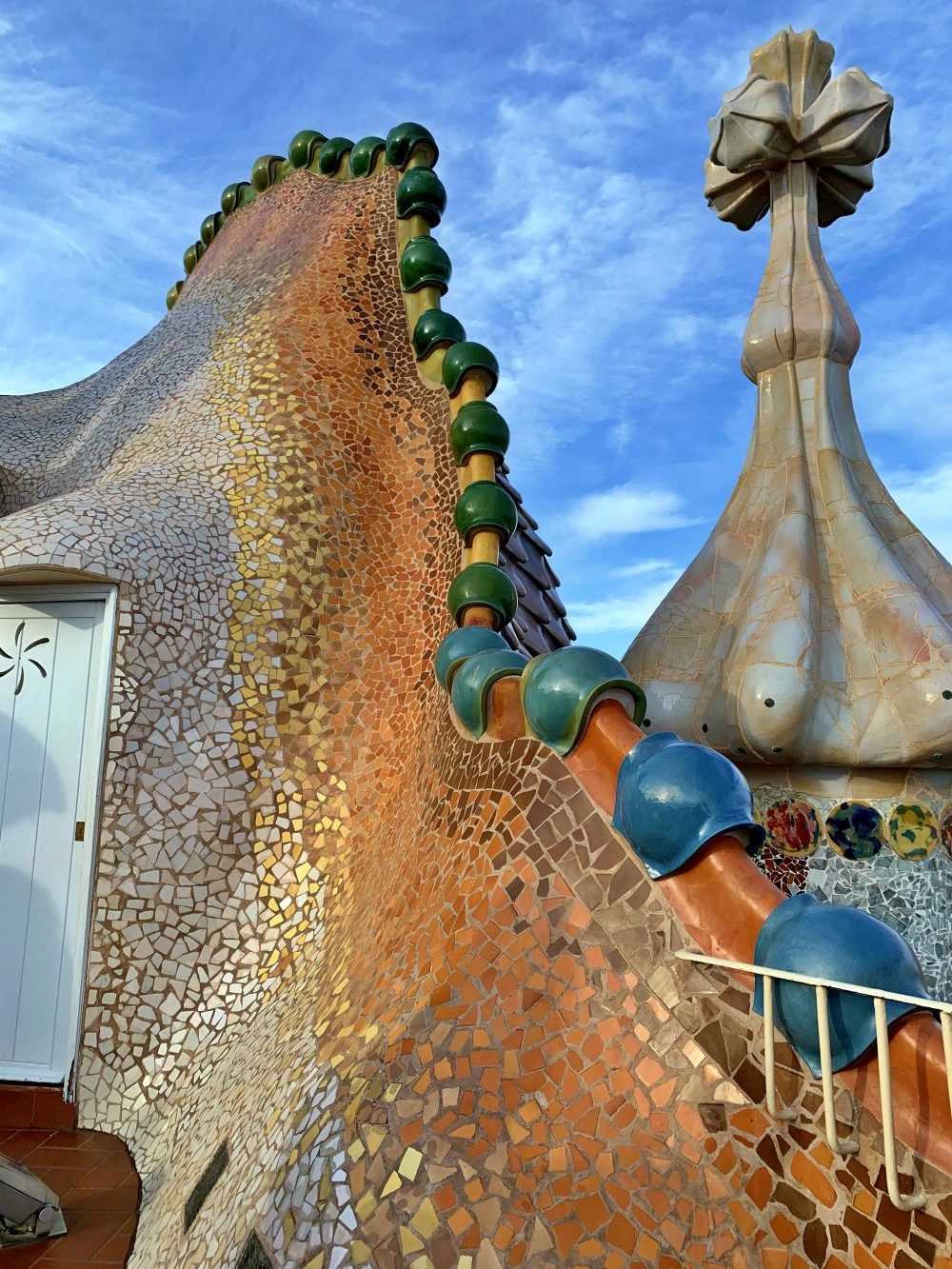 Towards the front of the house, you come upon the 'Dragon's Back', which is visible from the street. A wavy line of tiles and organic shapes that echo the curvature found everywhere else inside and on the facades of the house.
Towards the front of the house, you come upon the 'Dragon's Back', which is visible from the street. A wavy line of tiles and organic shapes that echo the curvature found everywhere else inside and on the facades of the house.
I'd definitely recommend seeing at least one of Gaudí's homes when you visit Barcelona. All three of them are relatively close together so you can easily see the outsides of the two you don't buy tickets for! (Our walking path, which includes a mandatory pastry stop 
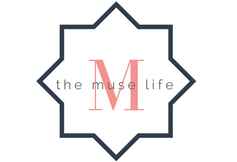
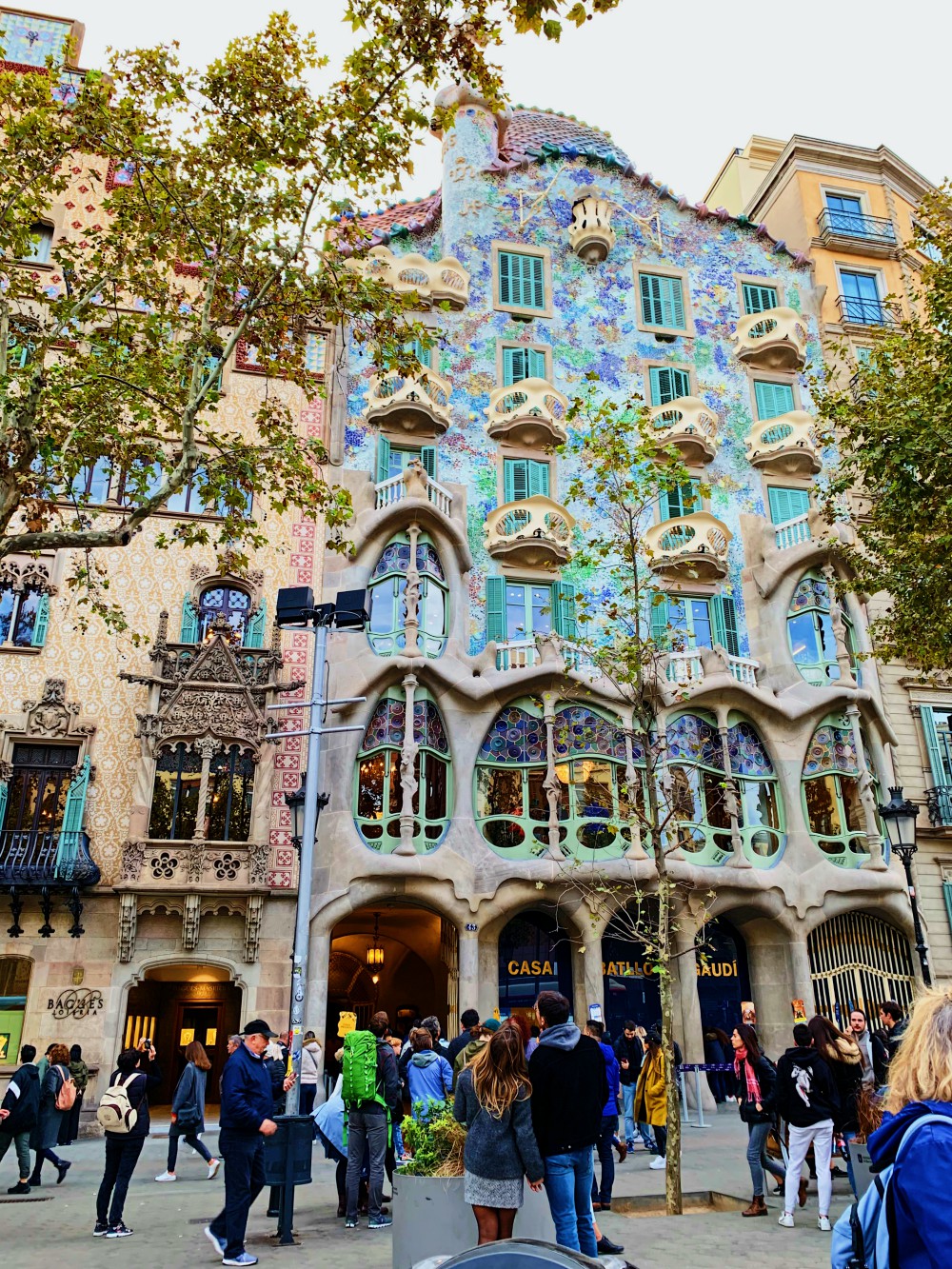
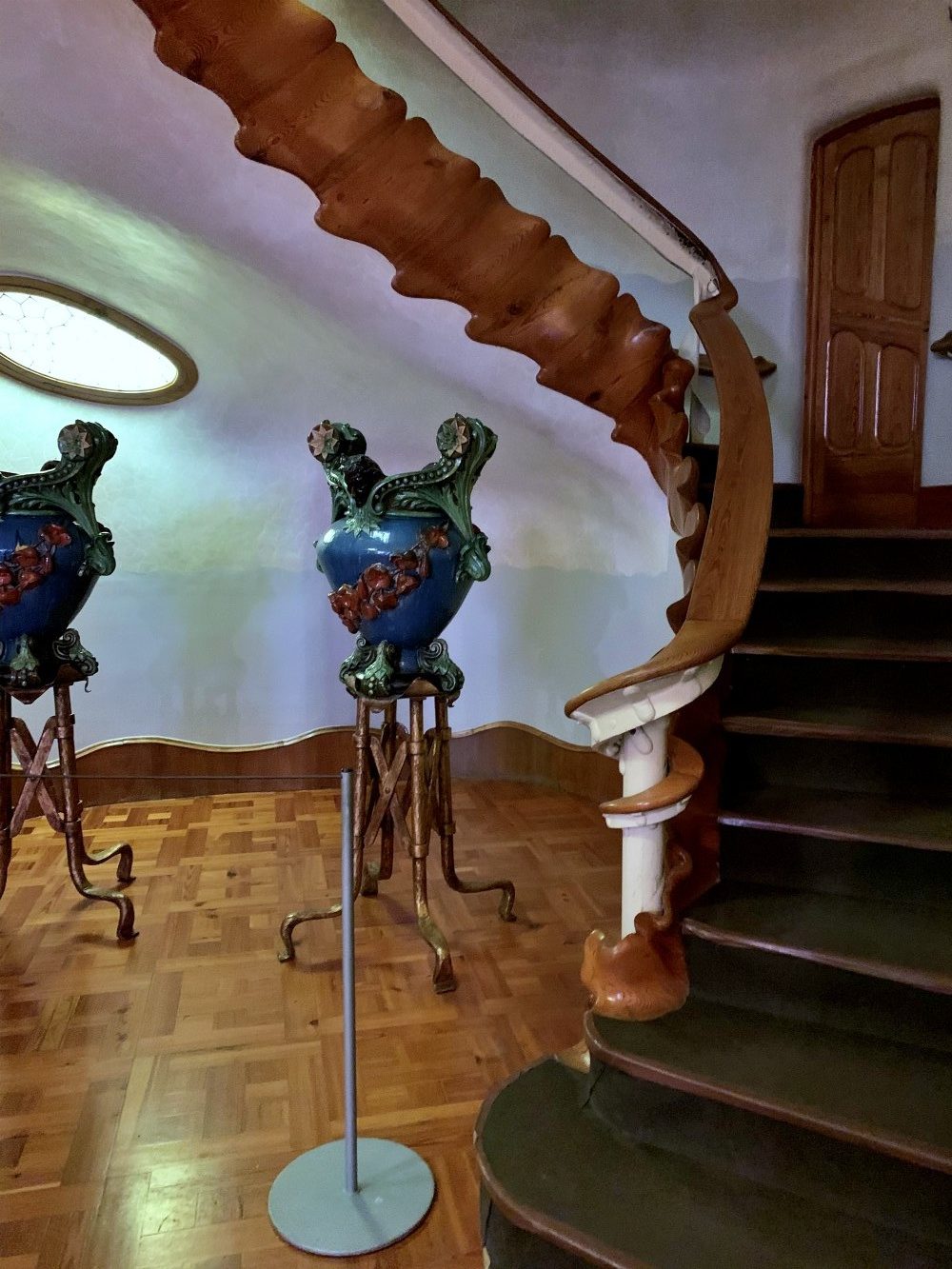
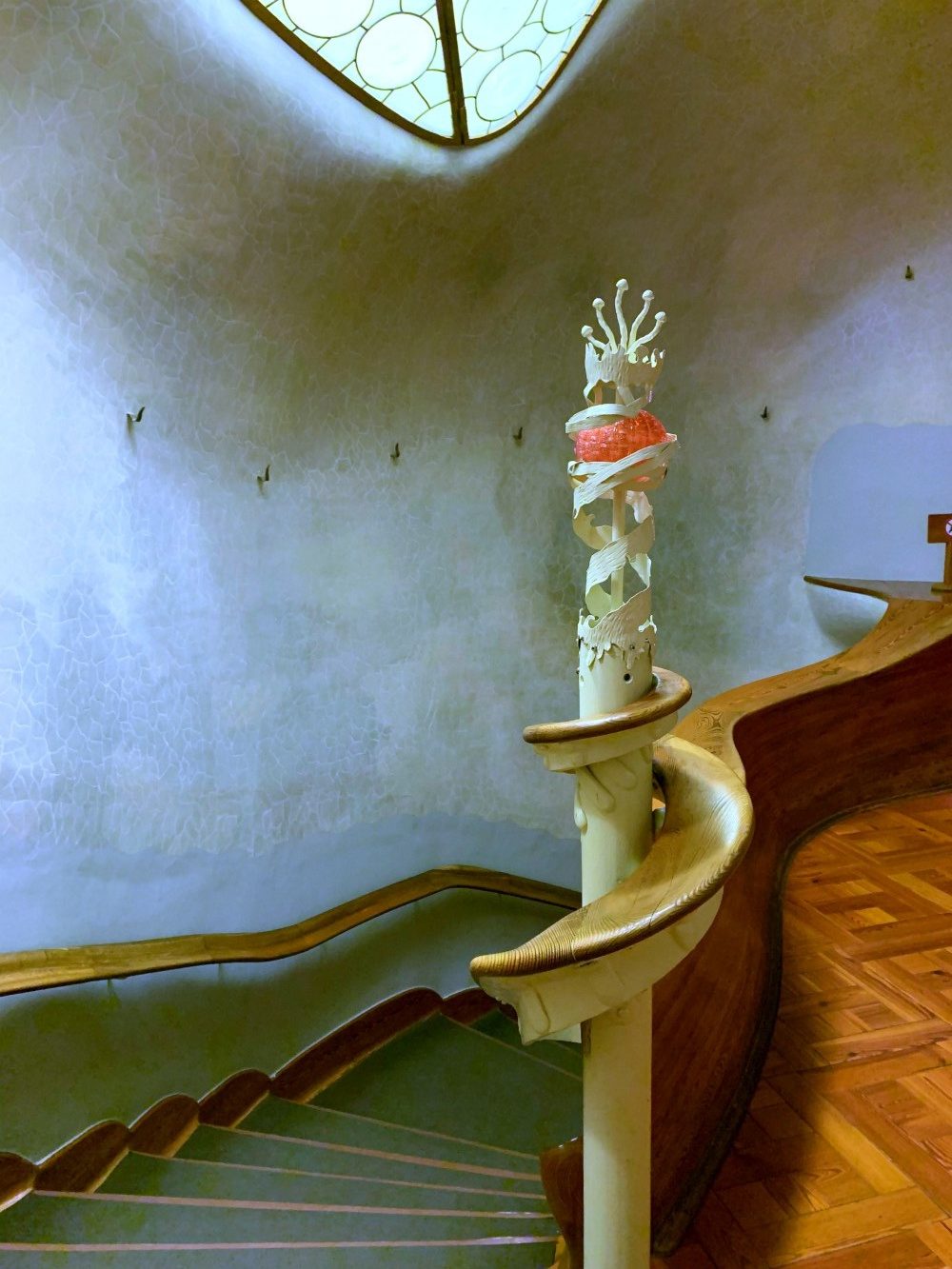
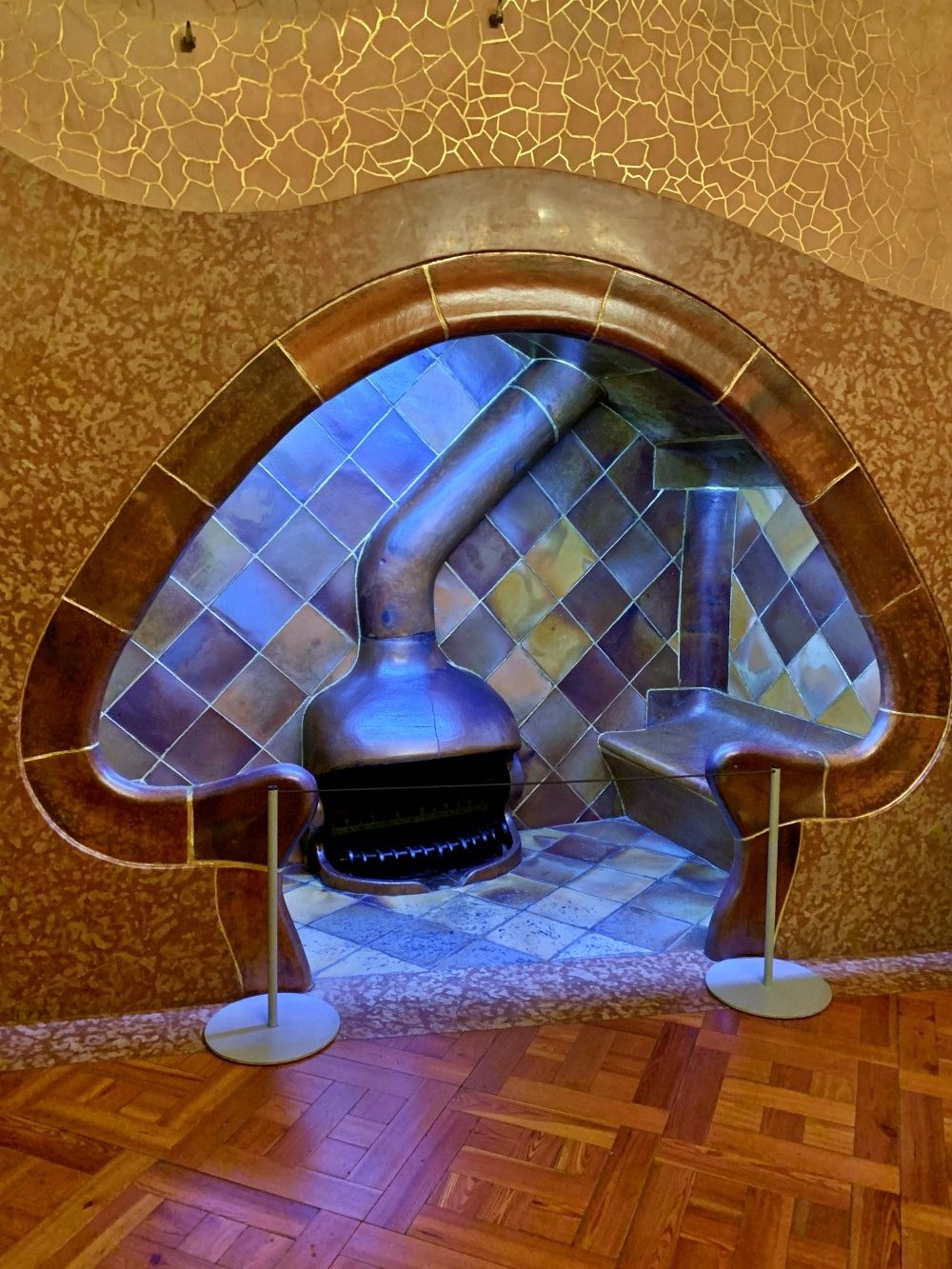
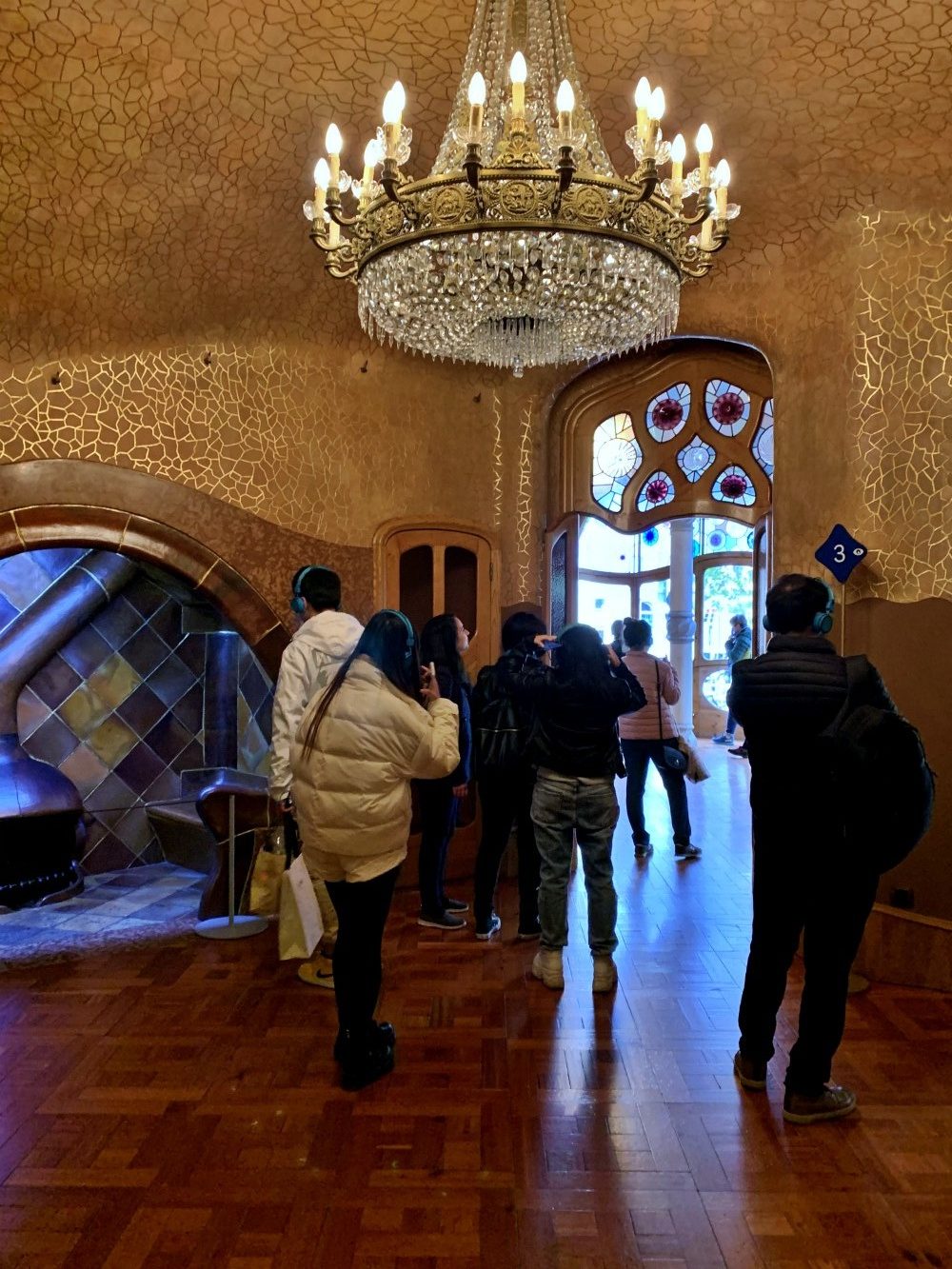
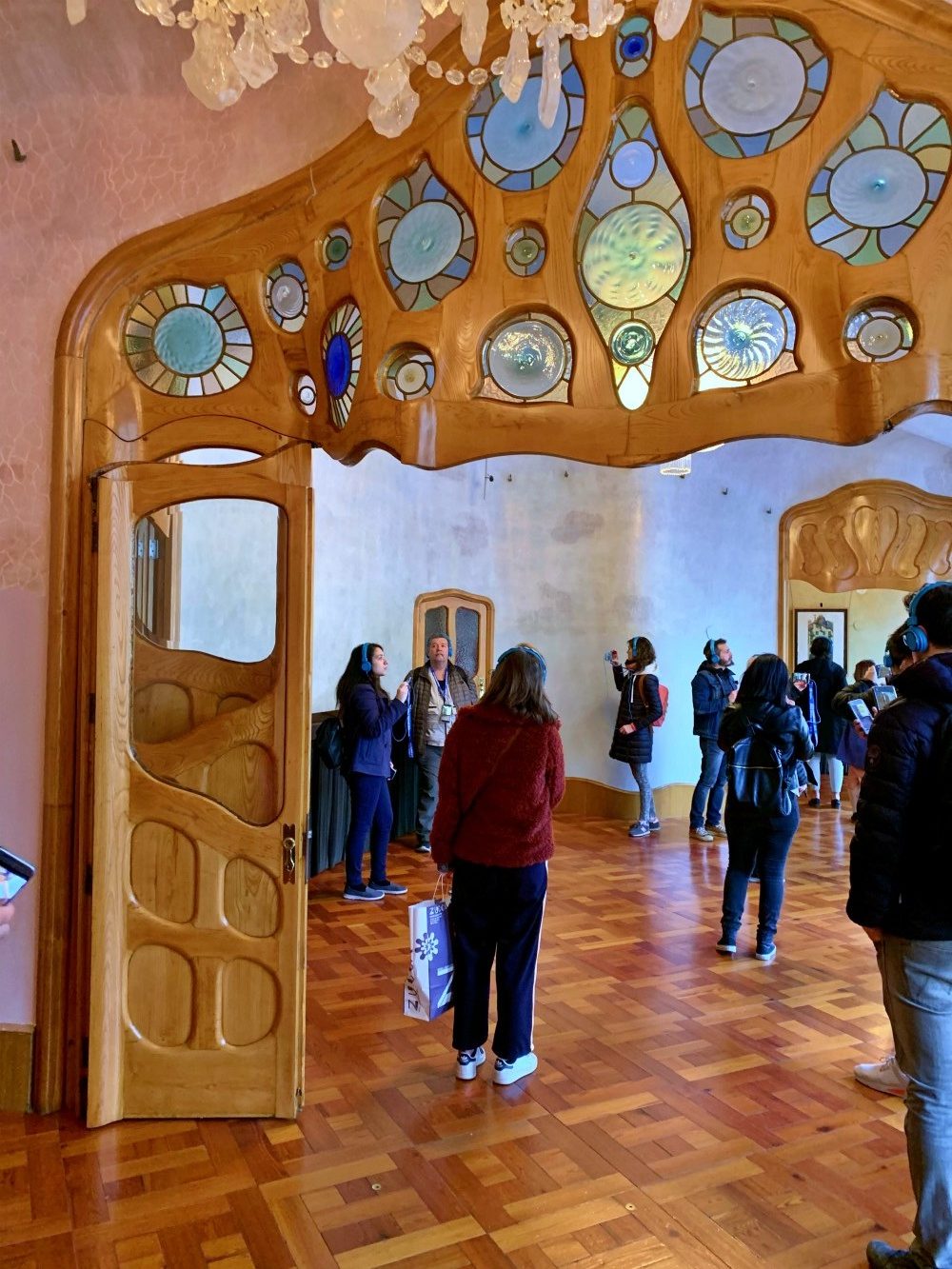
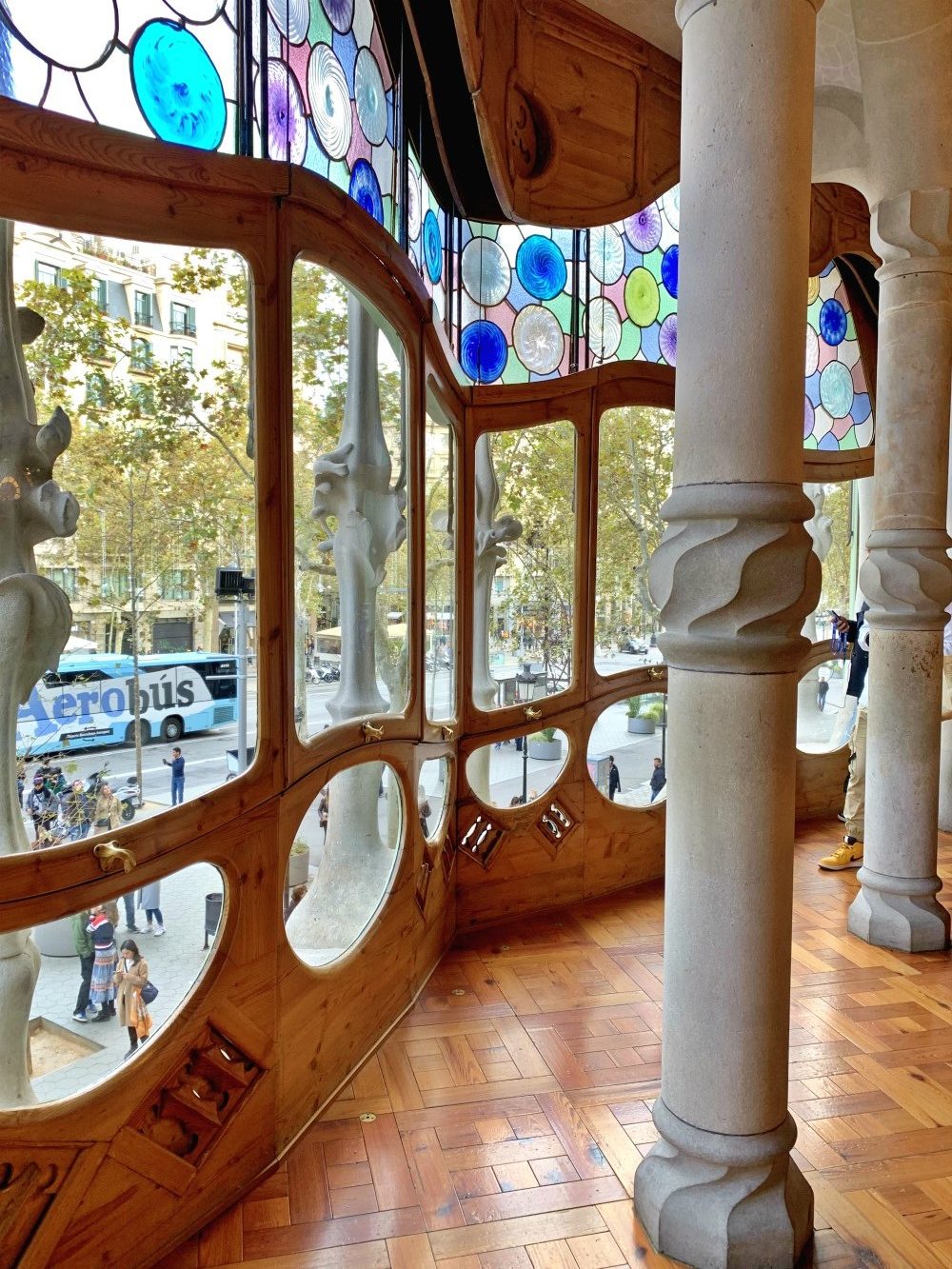
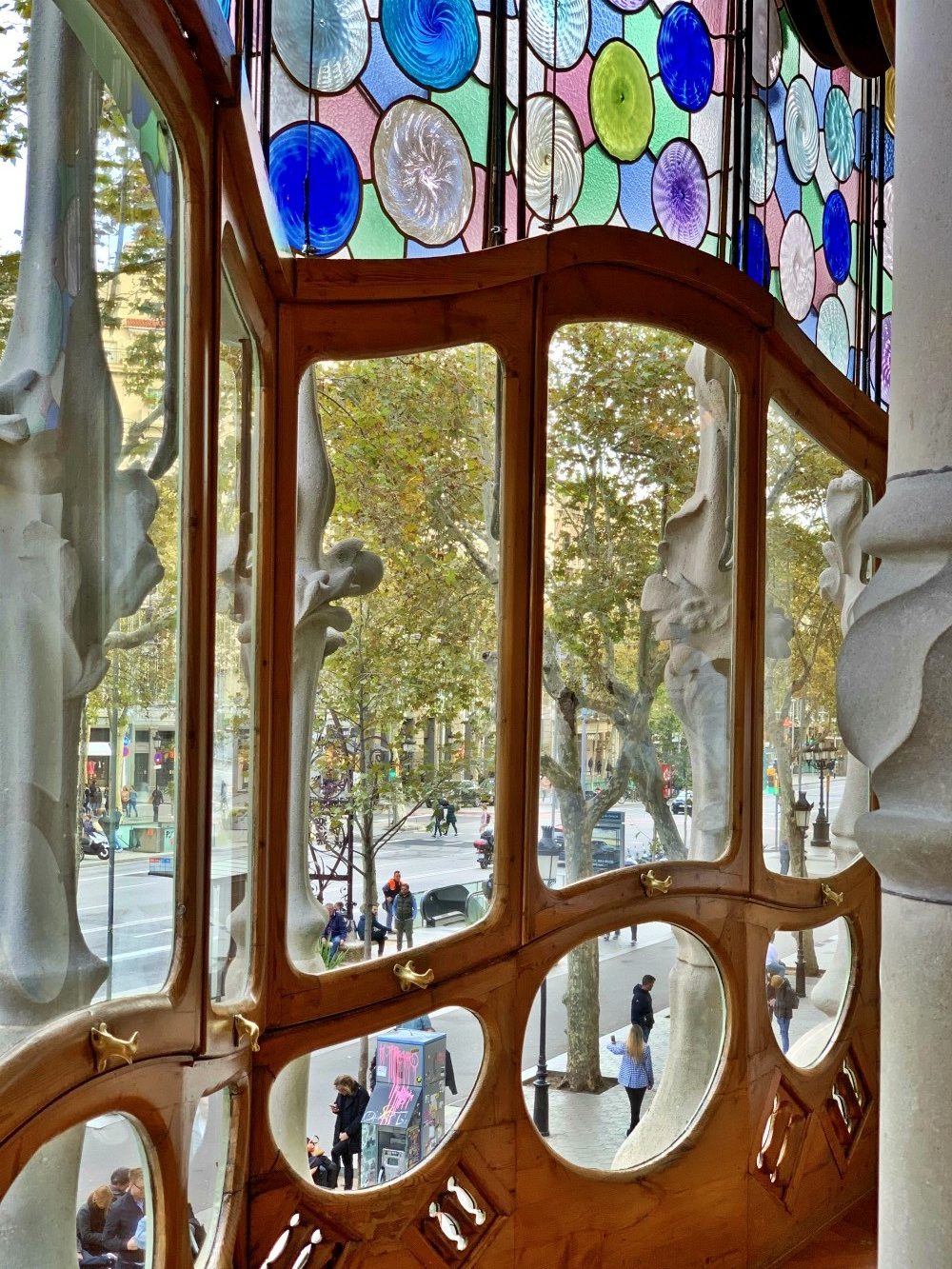
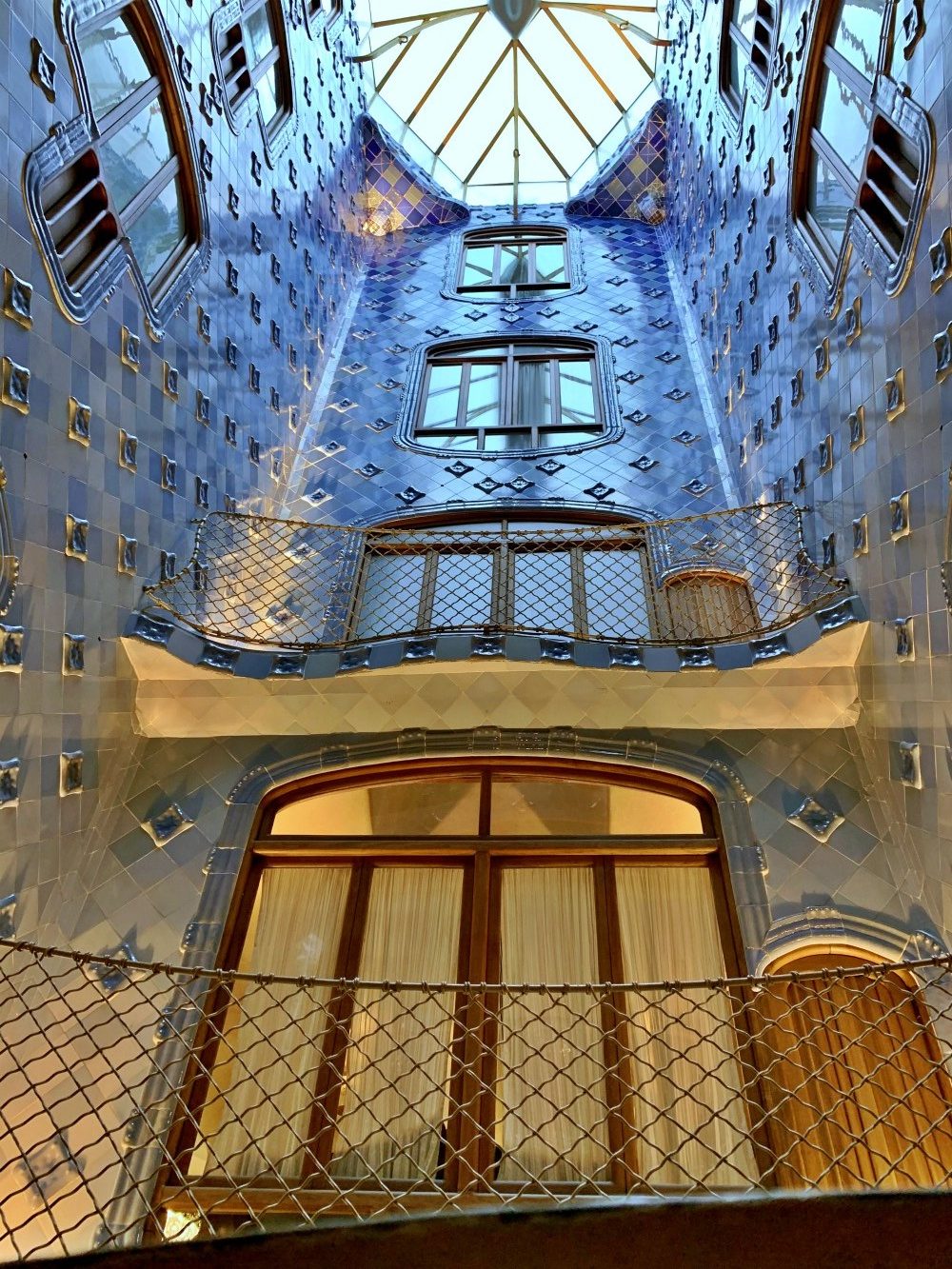
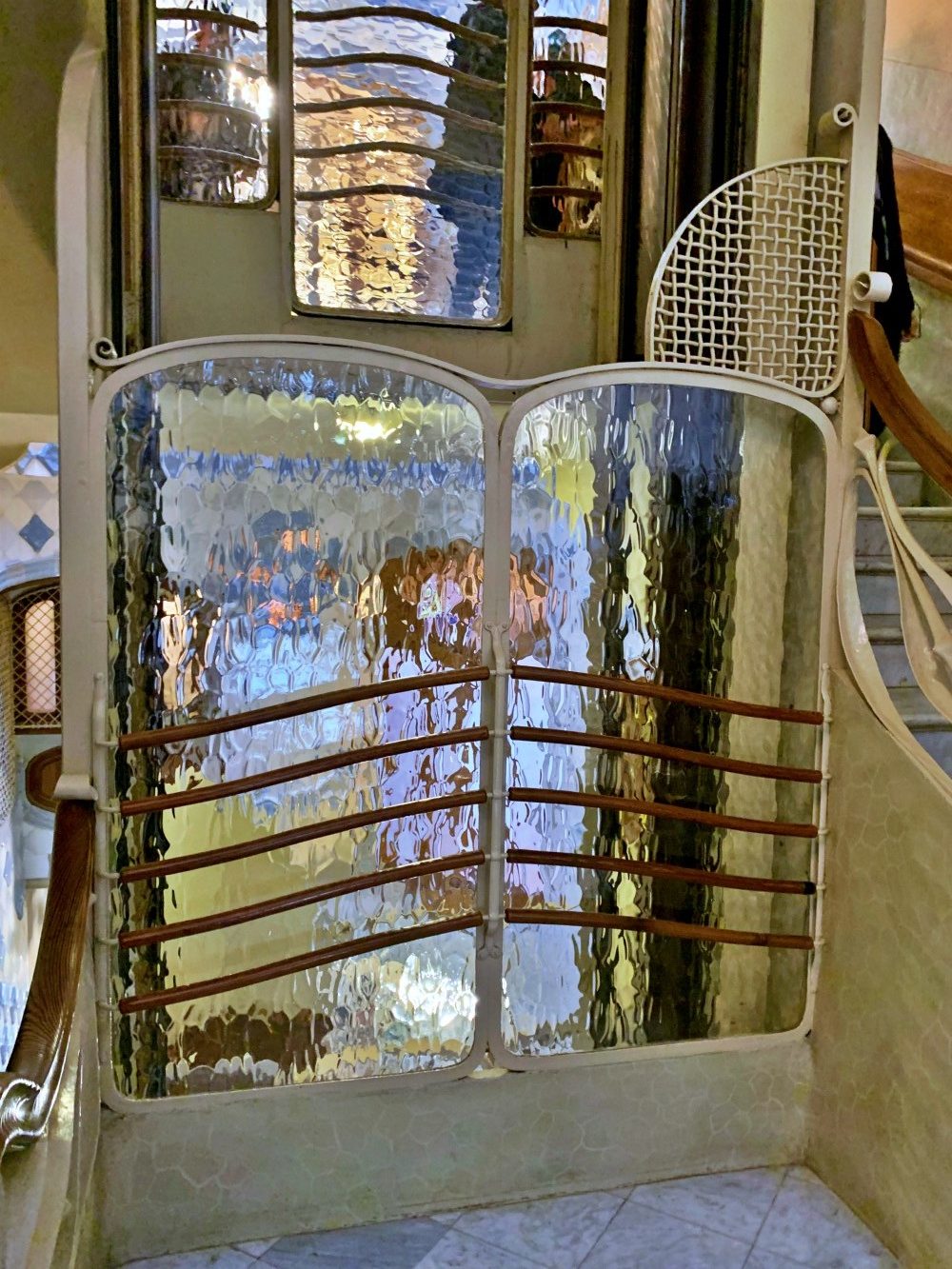
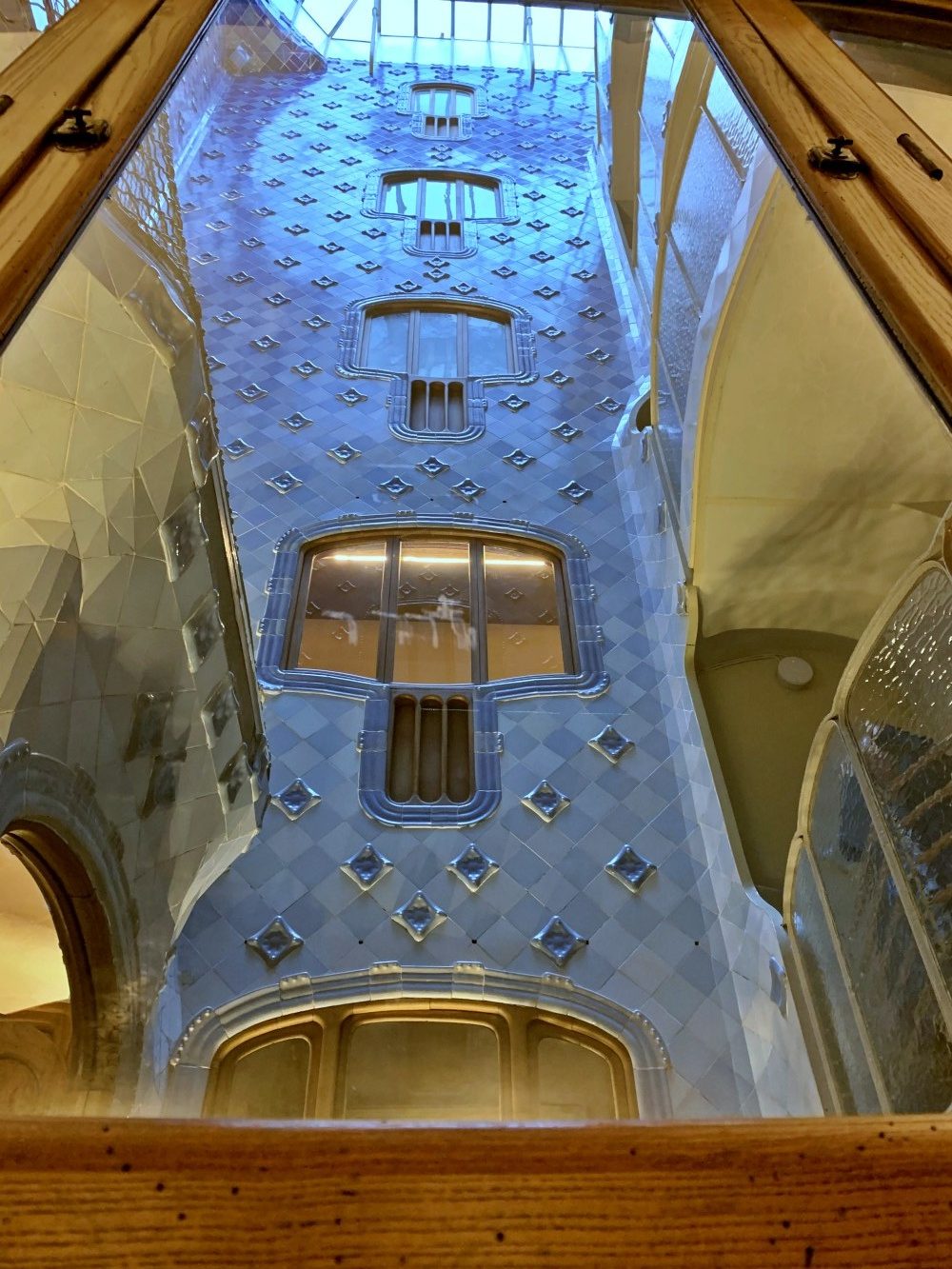
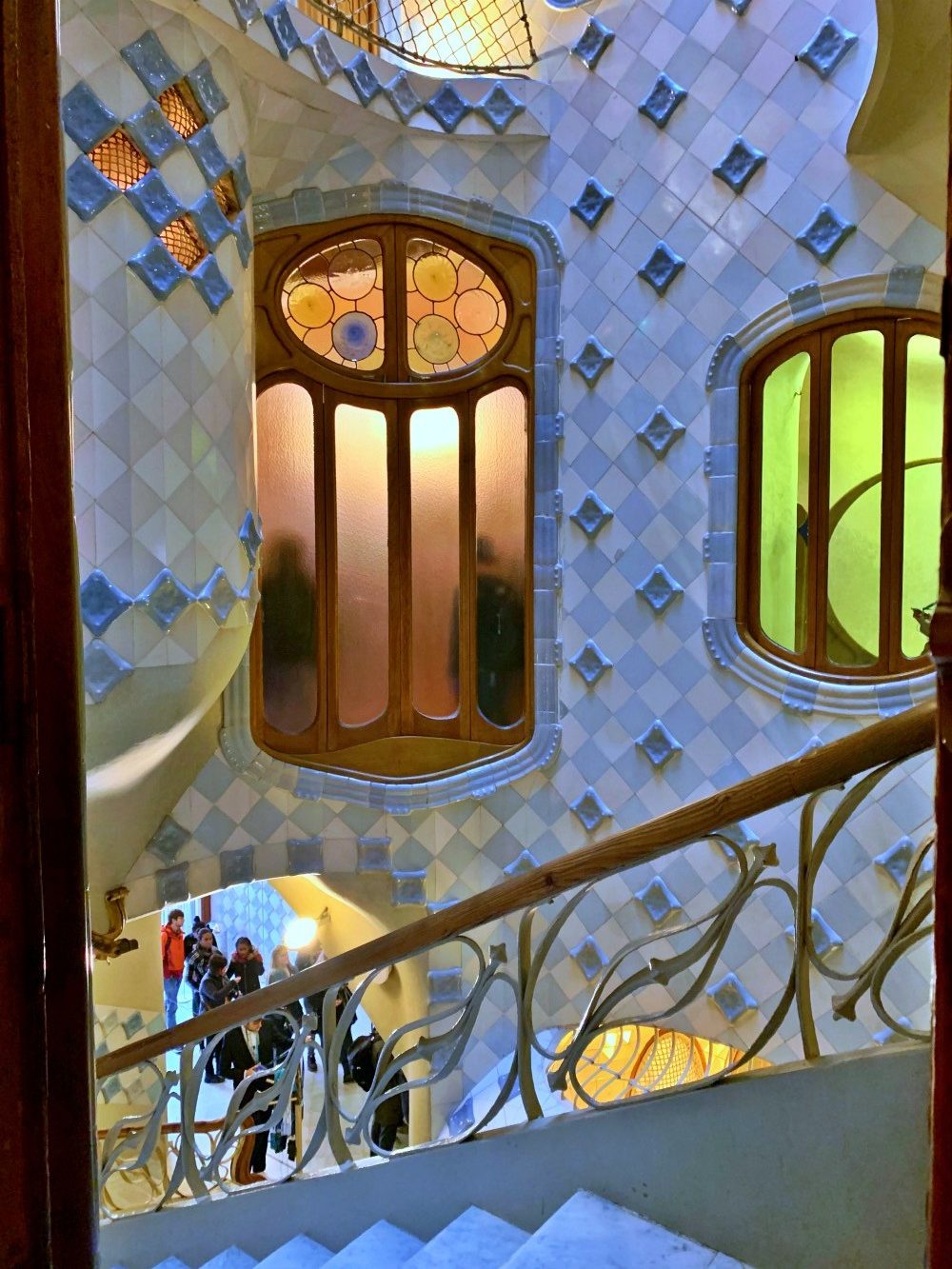
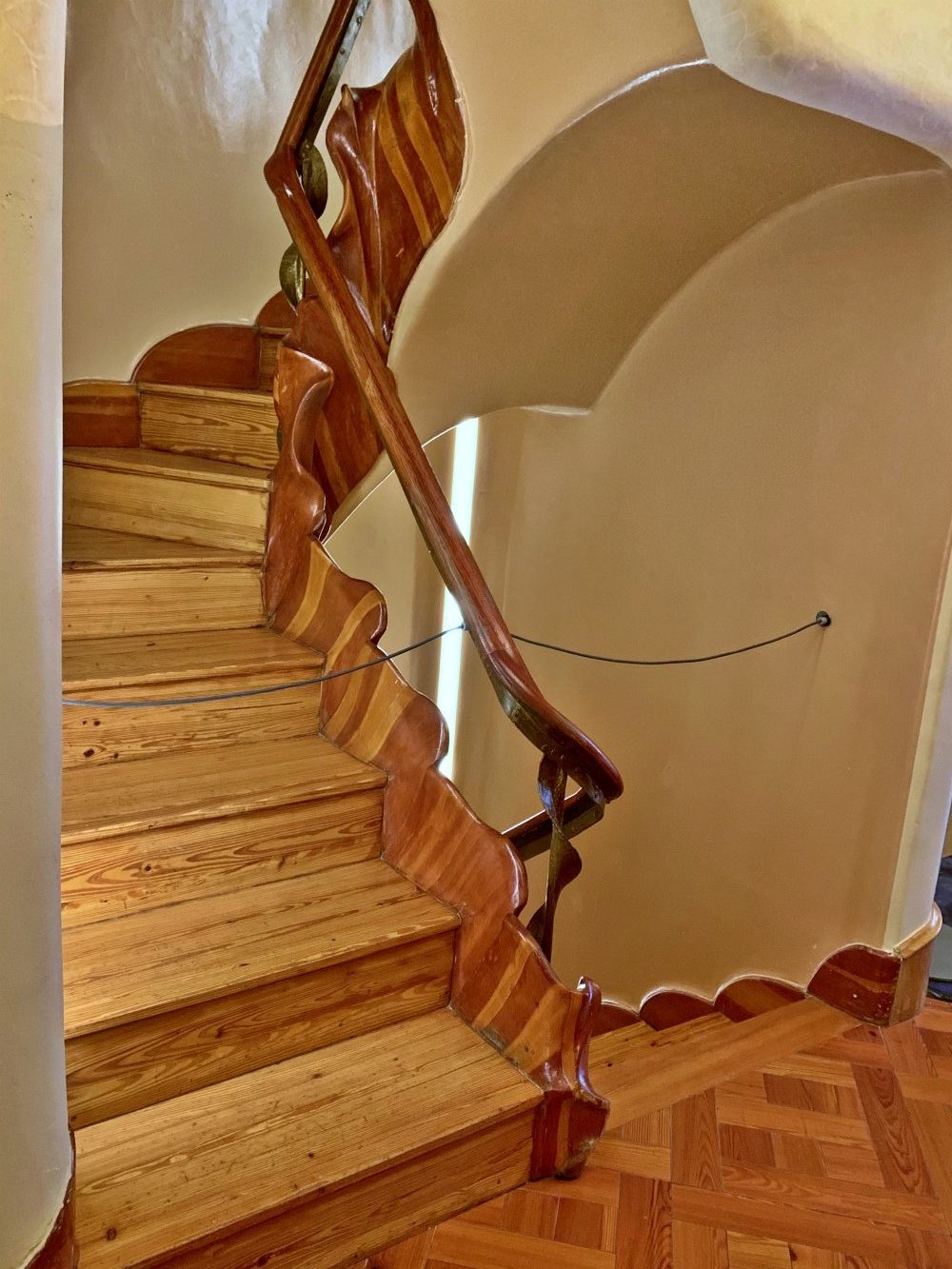
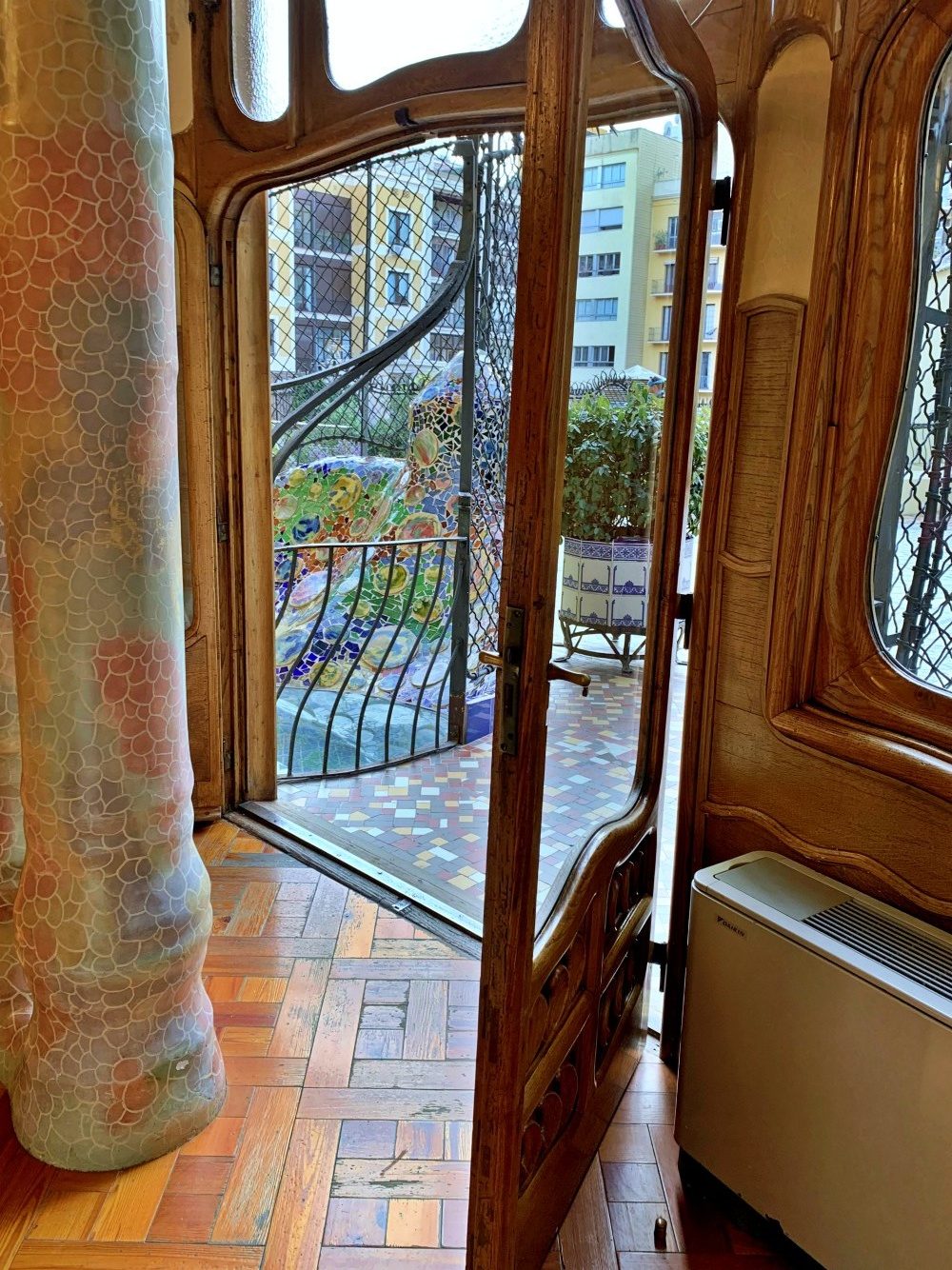
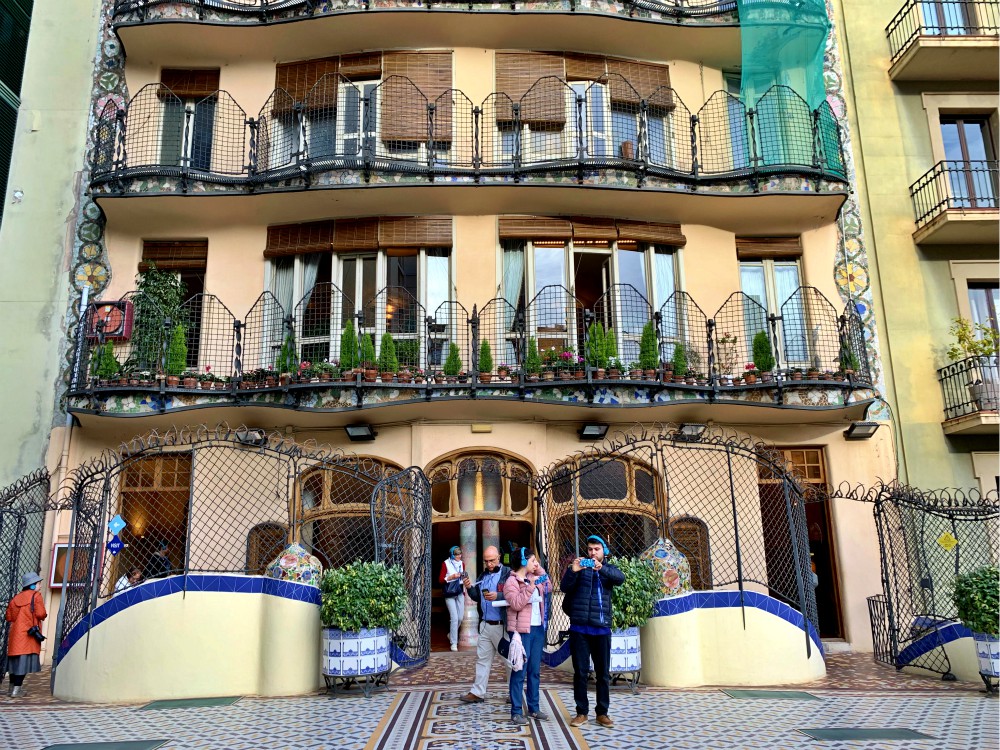
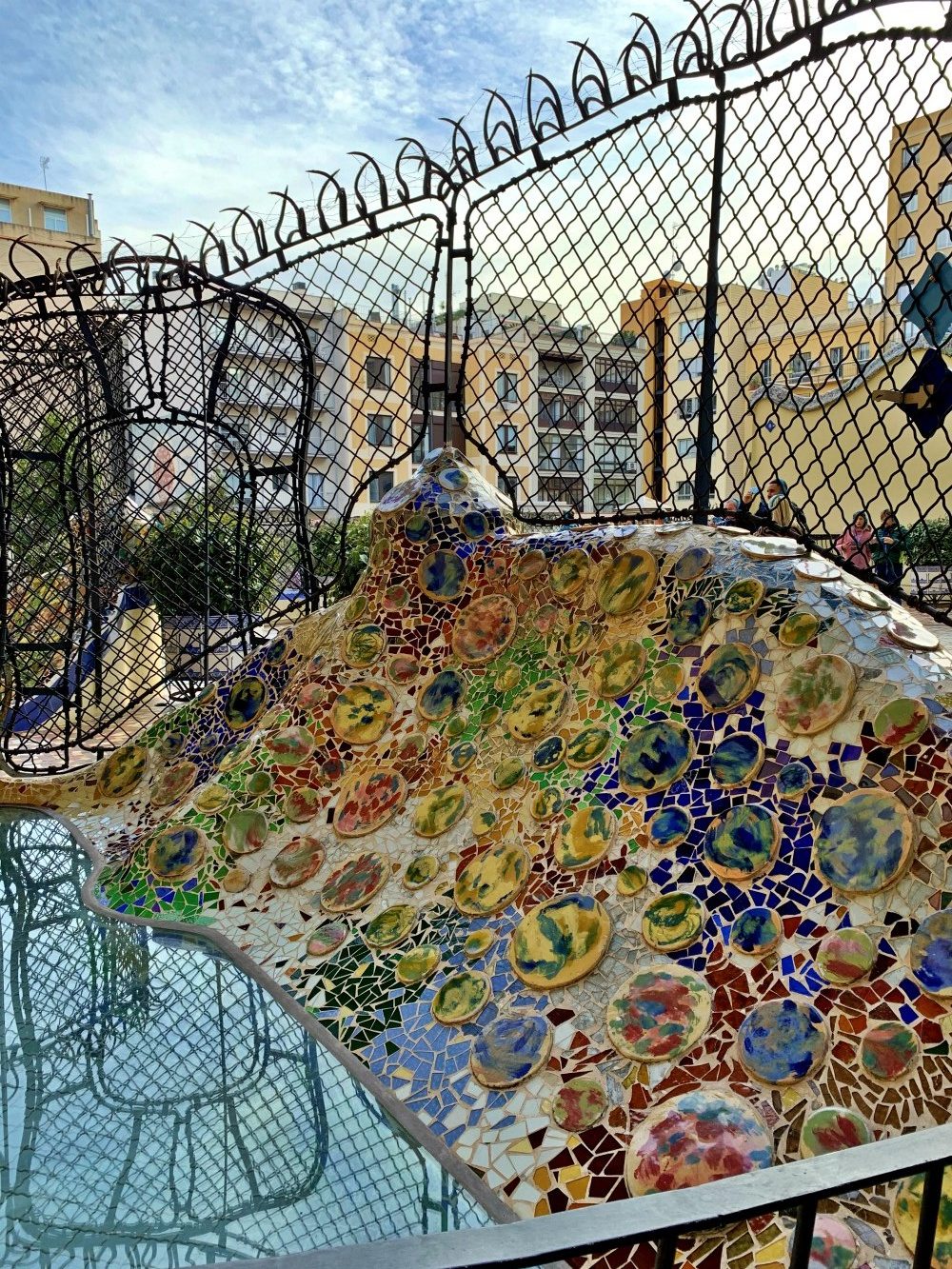
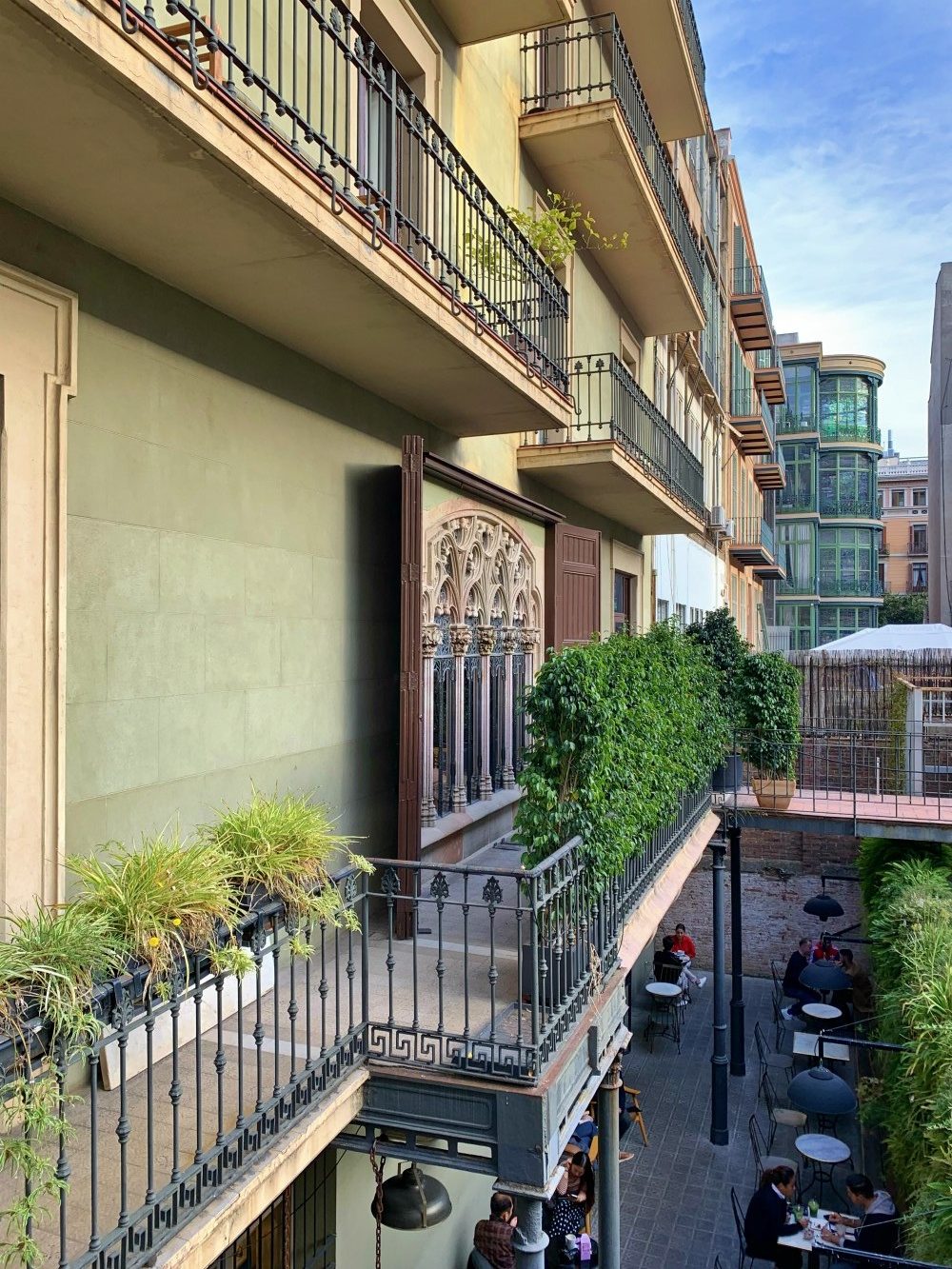
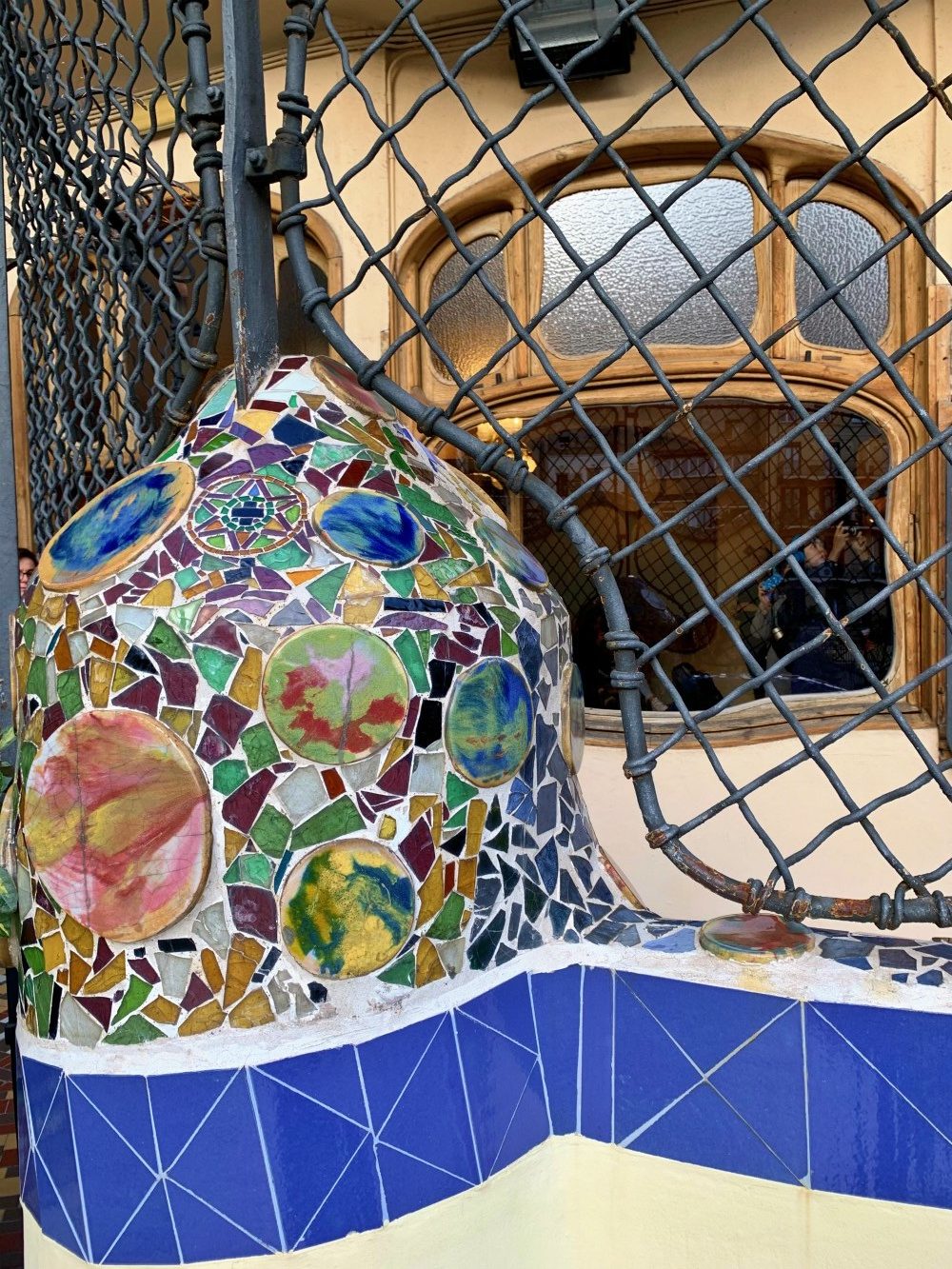
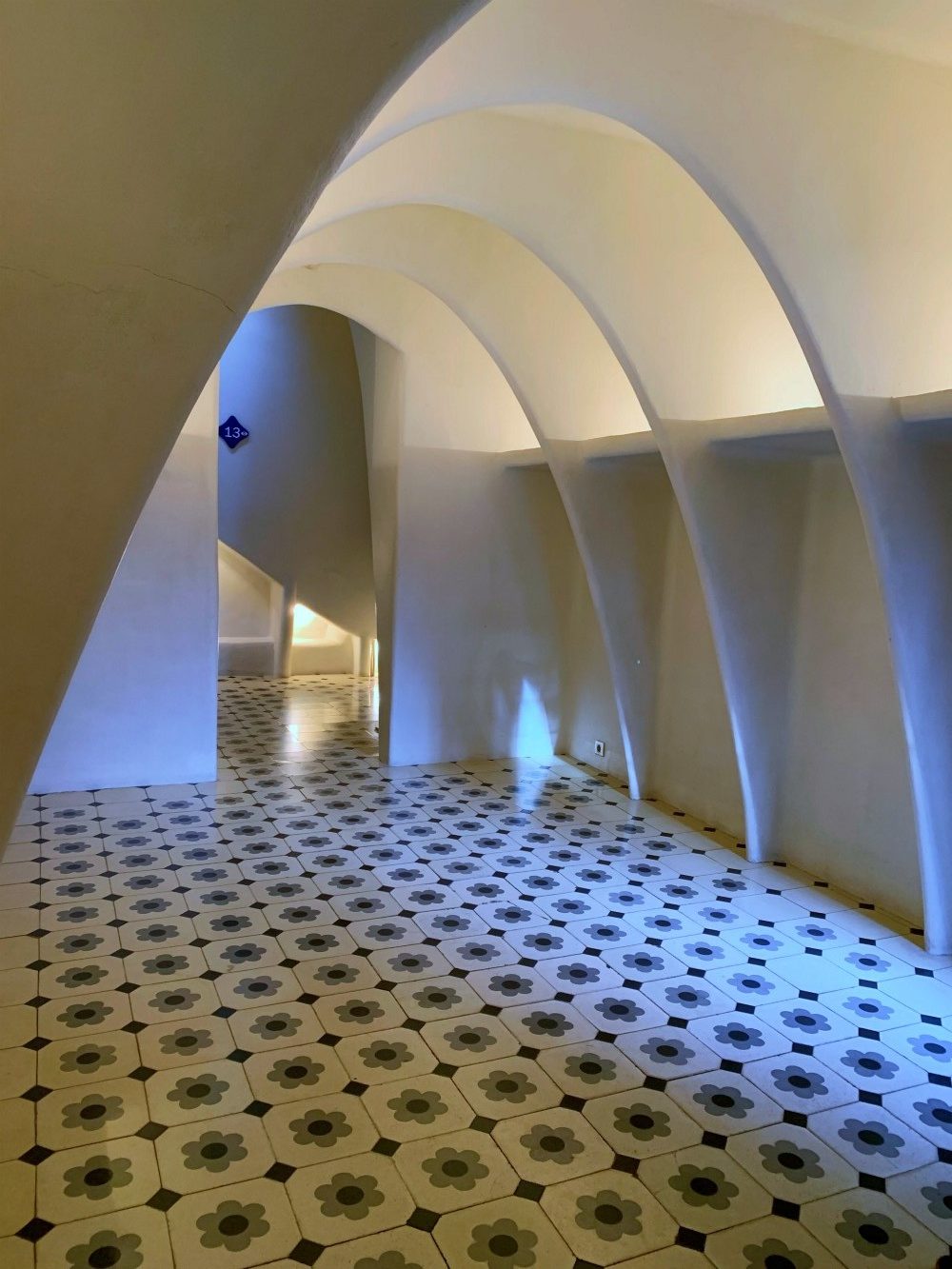
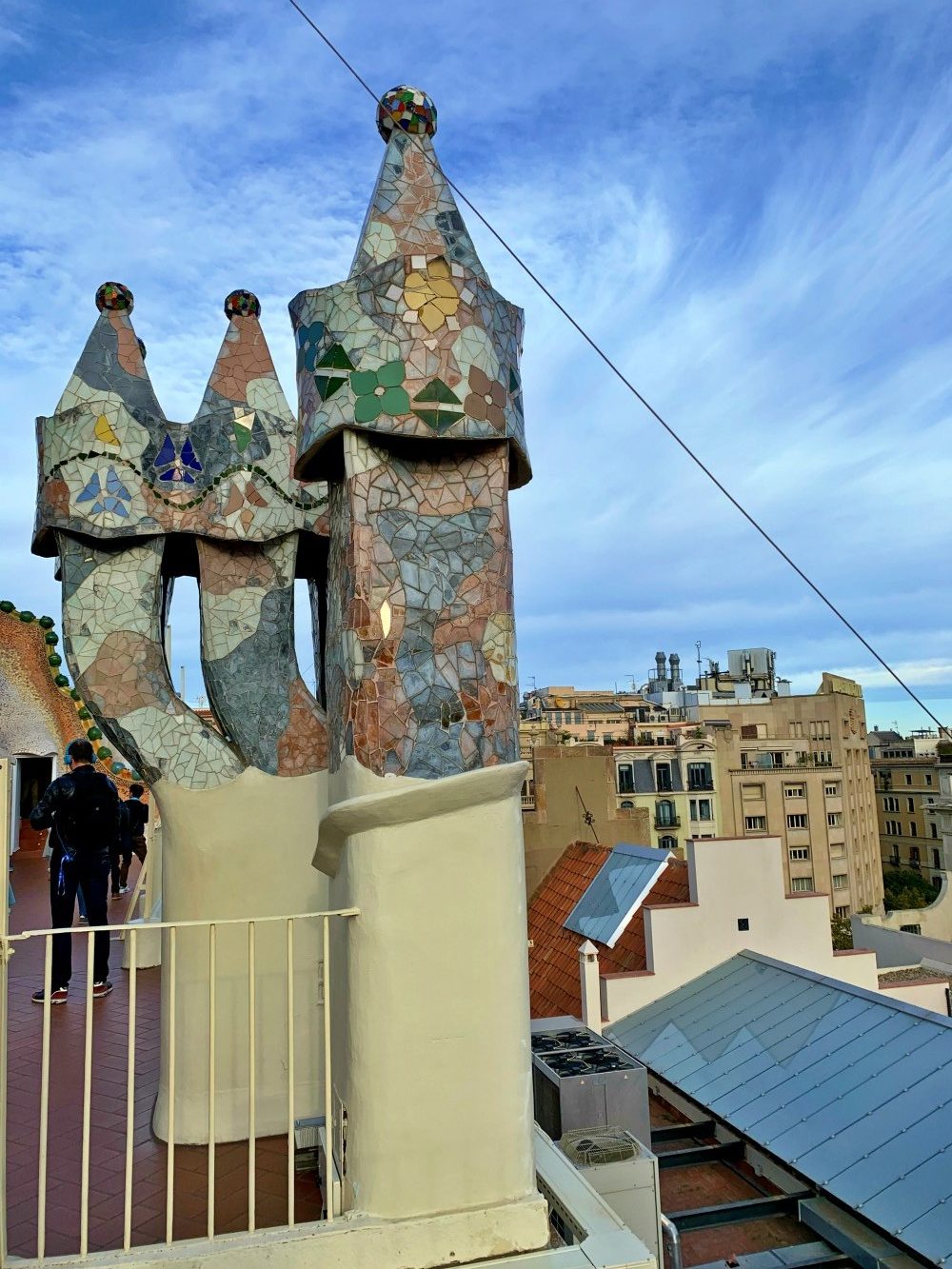
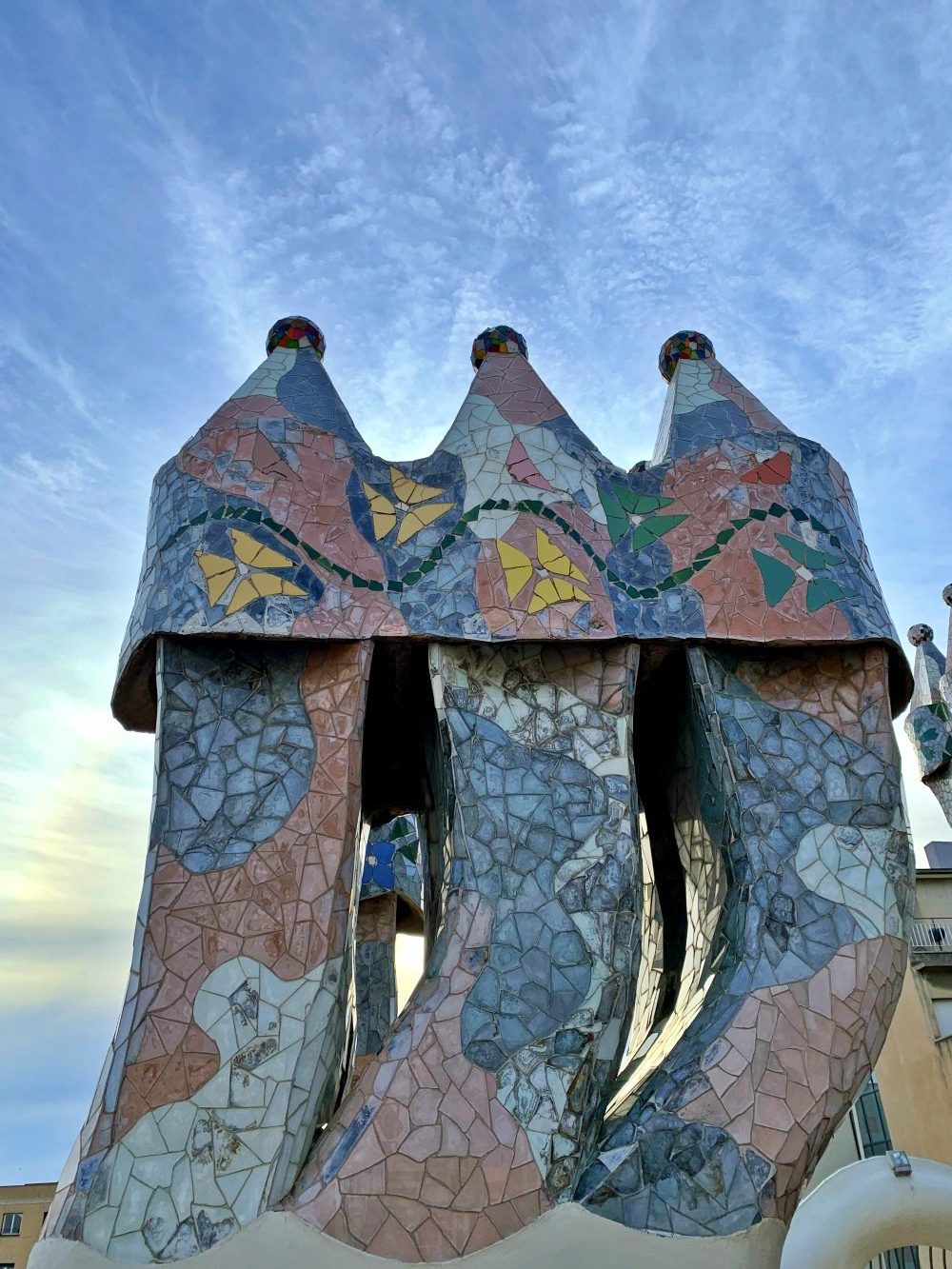
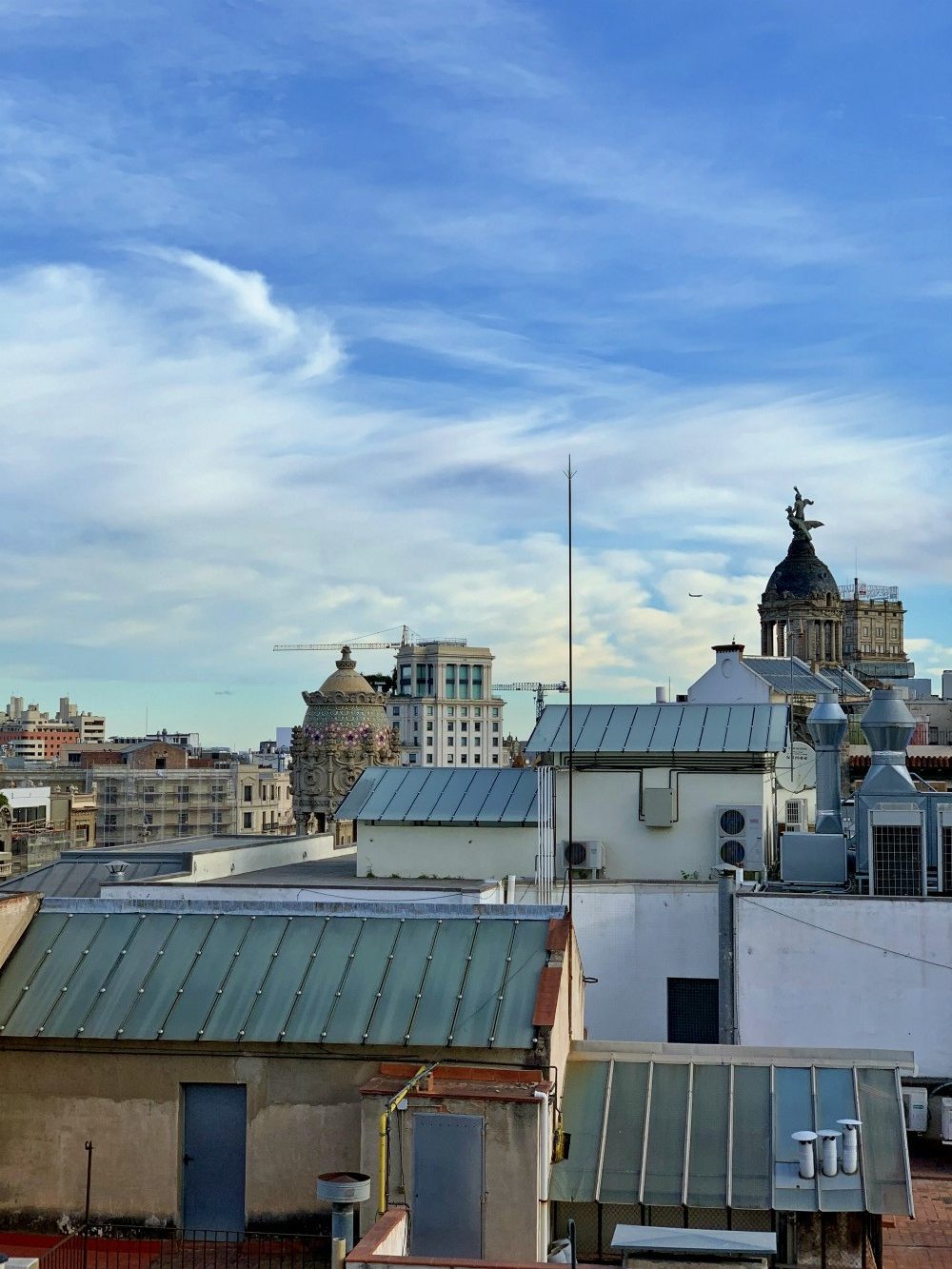
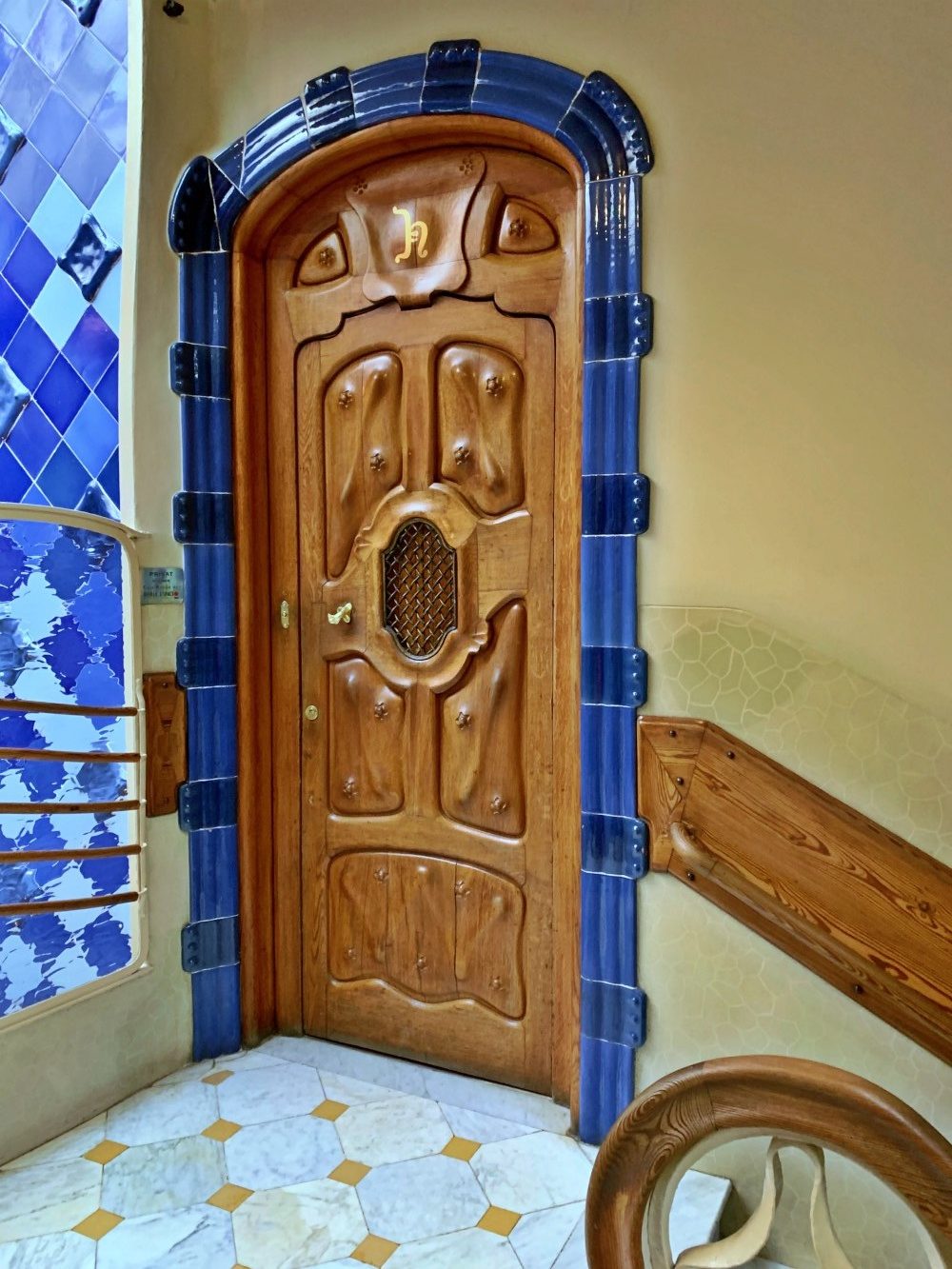
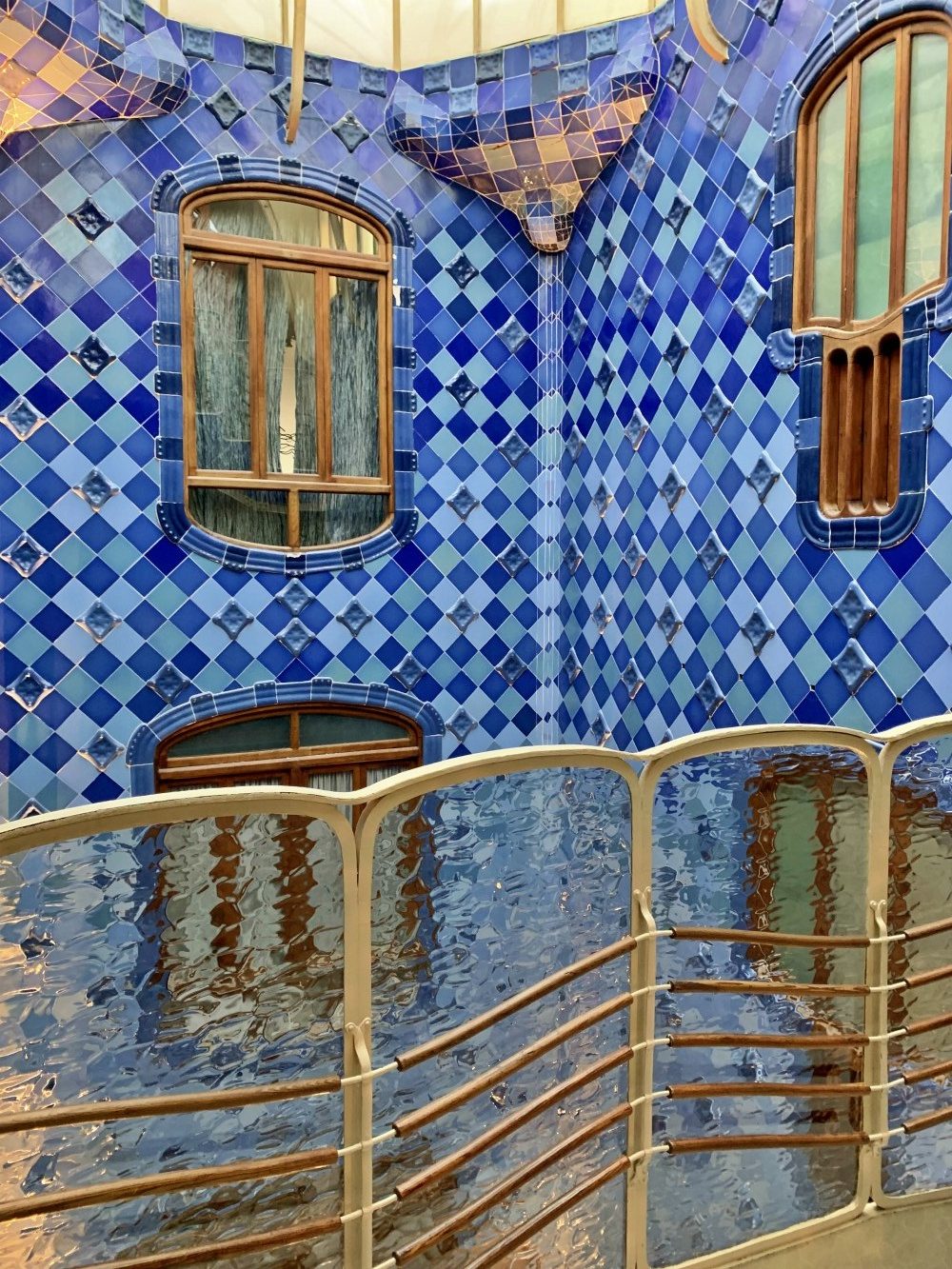
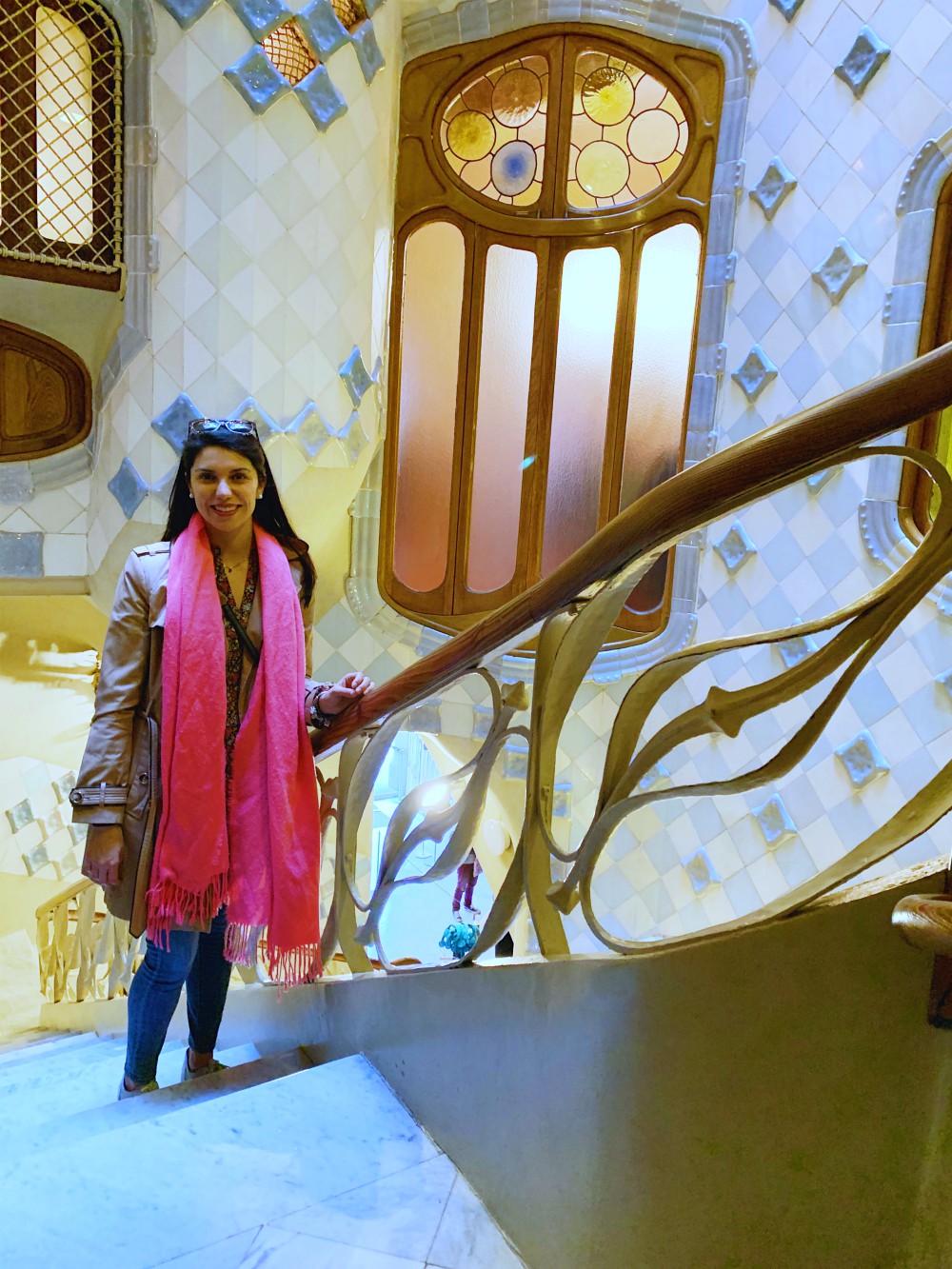
You have done a fabulous job of sharing this experience with us. Especially since we will probably not get back to Barcelona.
You really have helped me realize how much we didn’t’ get to see when we were there. Too bad but glad we get to relive it through you
I’m so glad you enjoyed all of these! 🙂